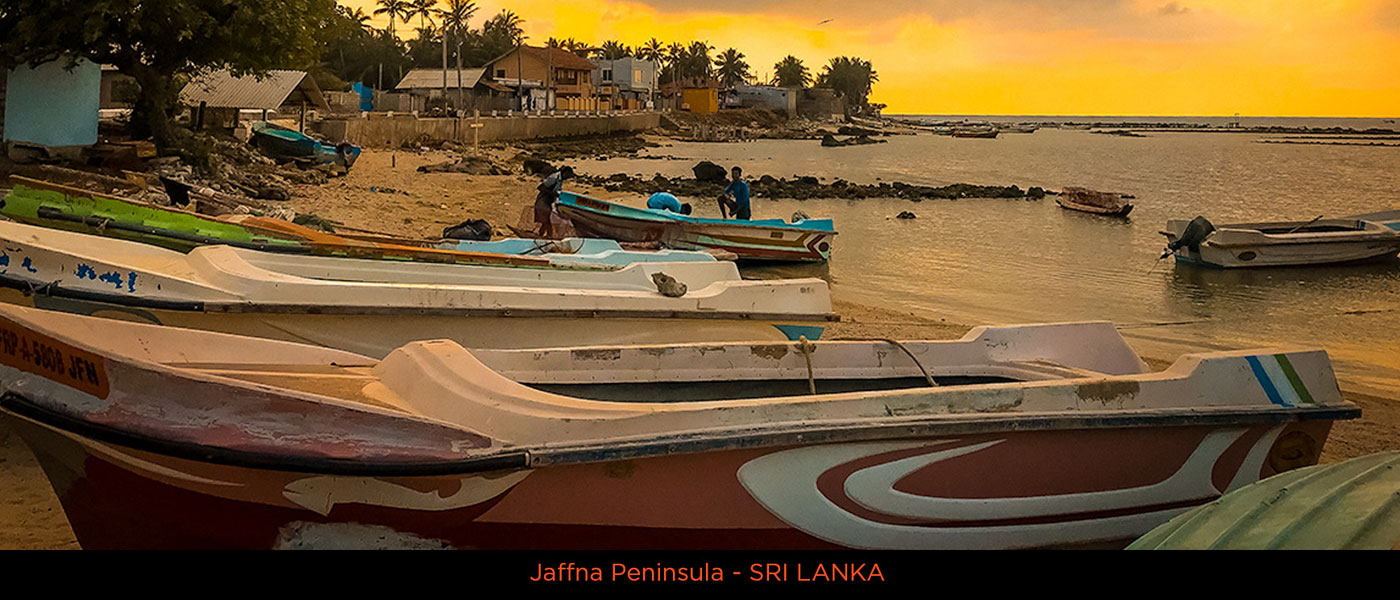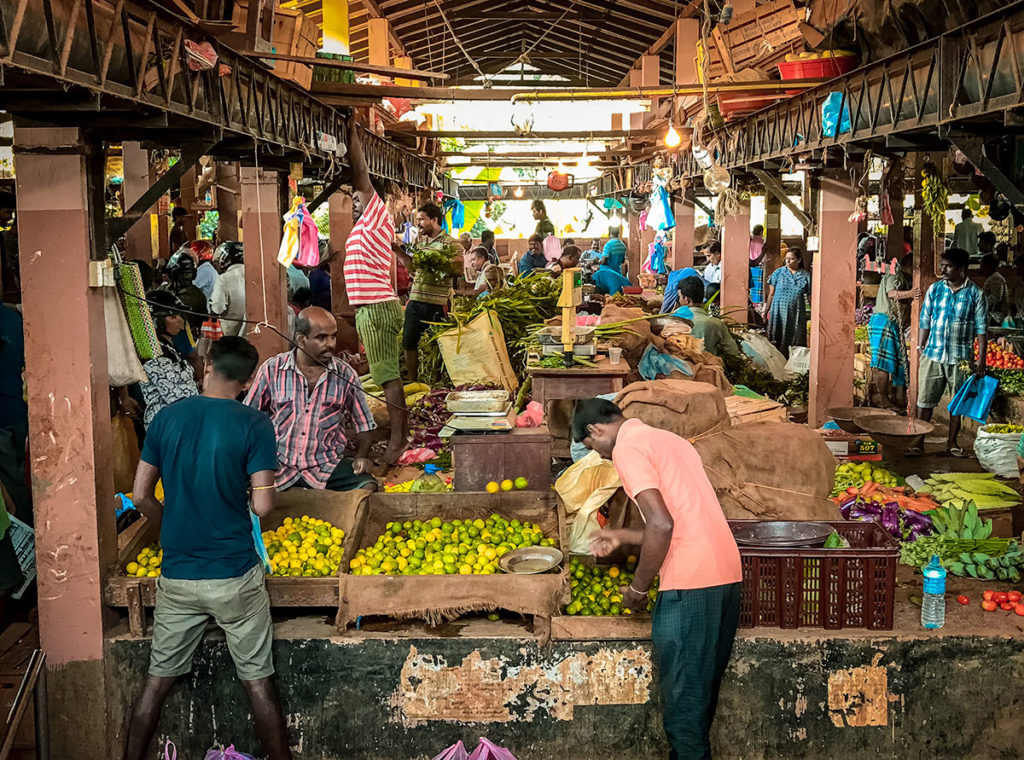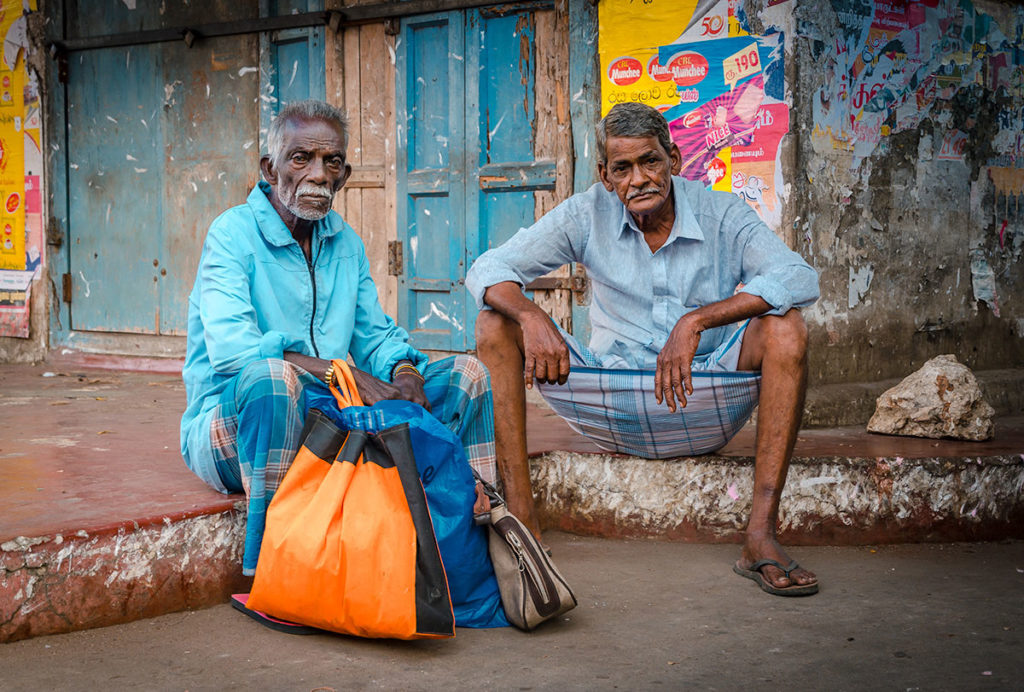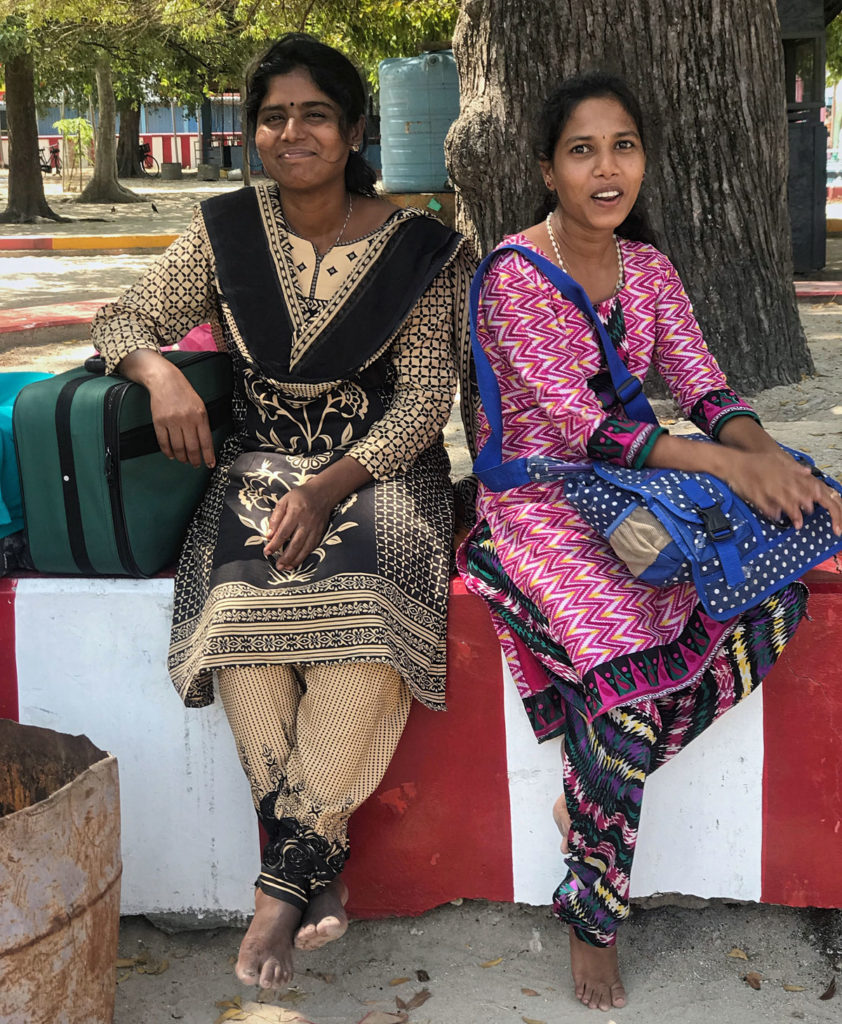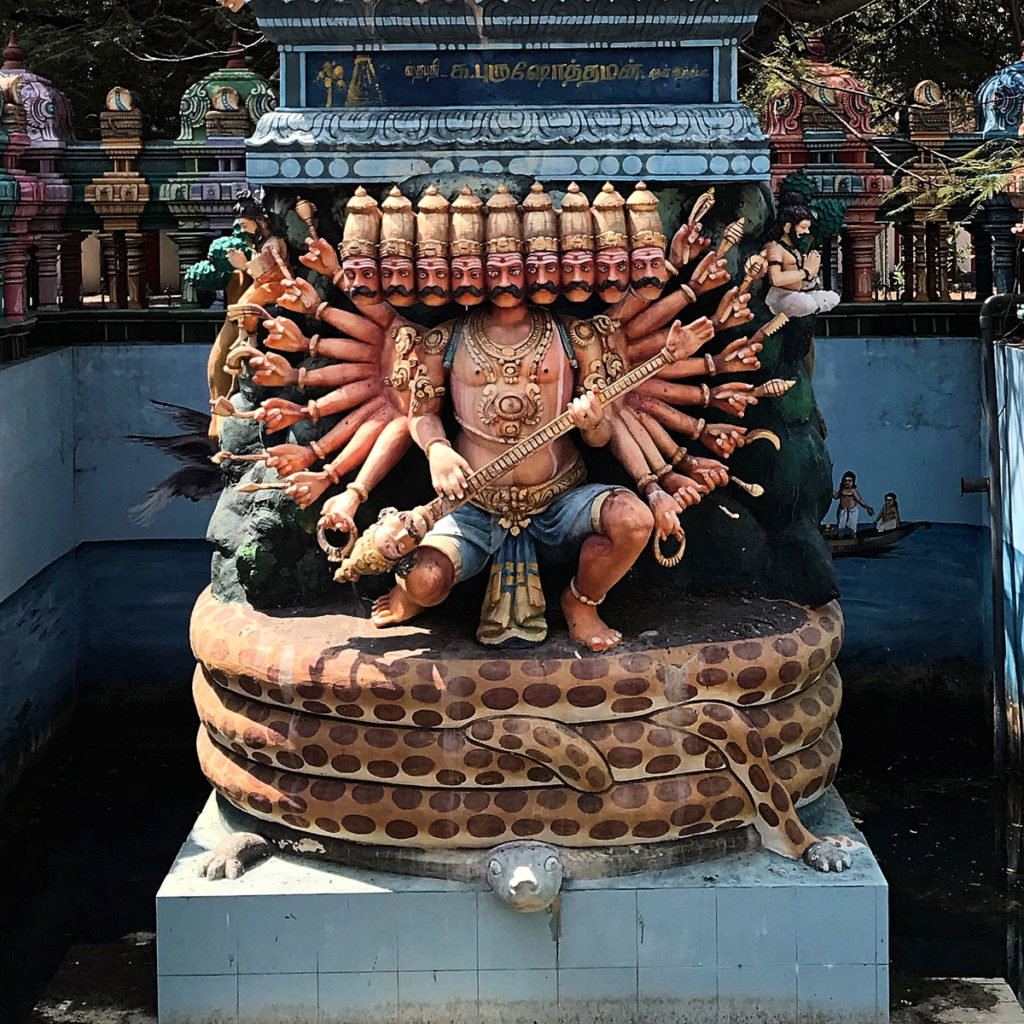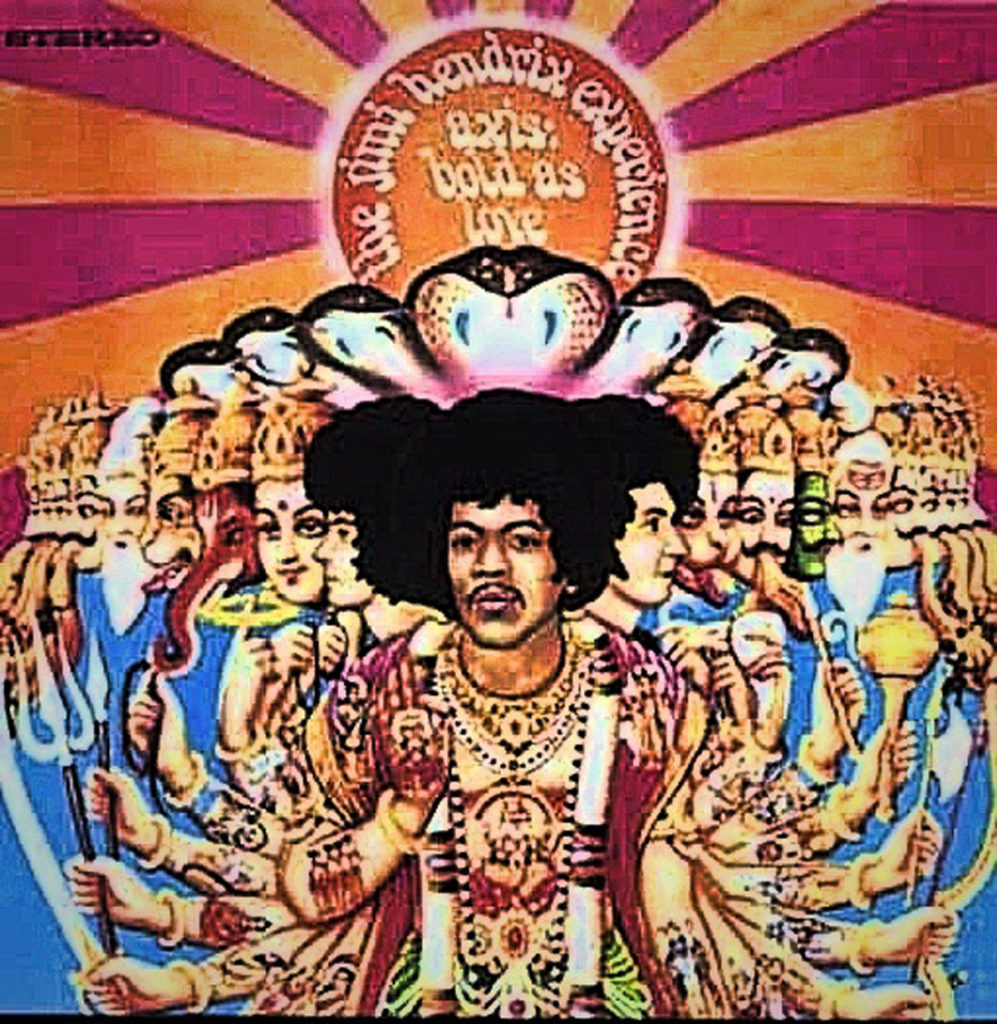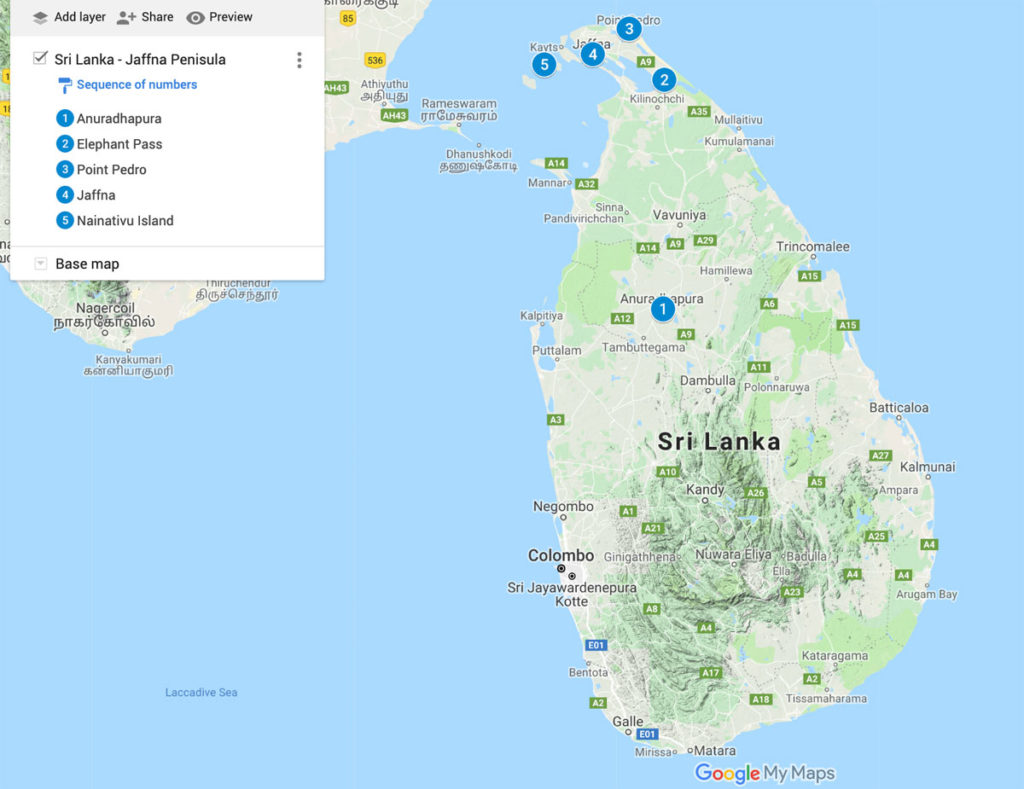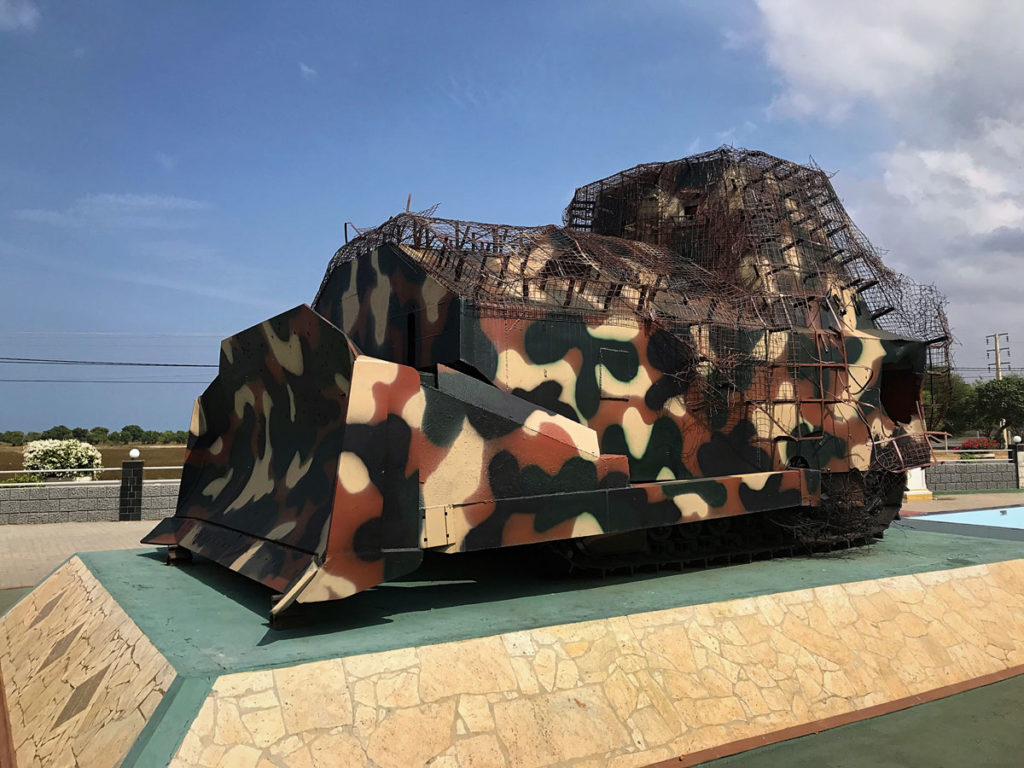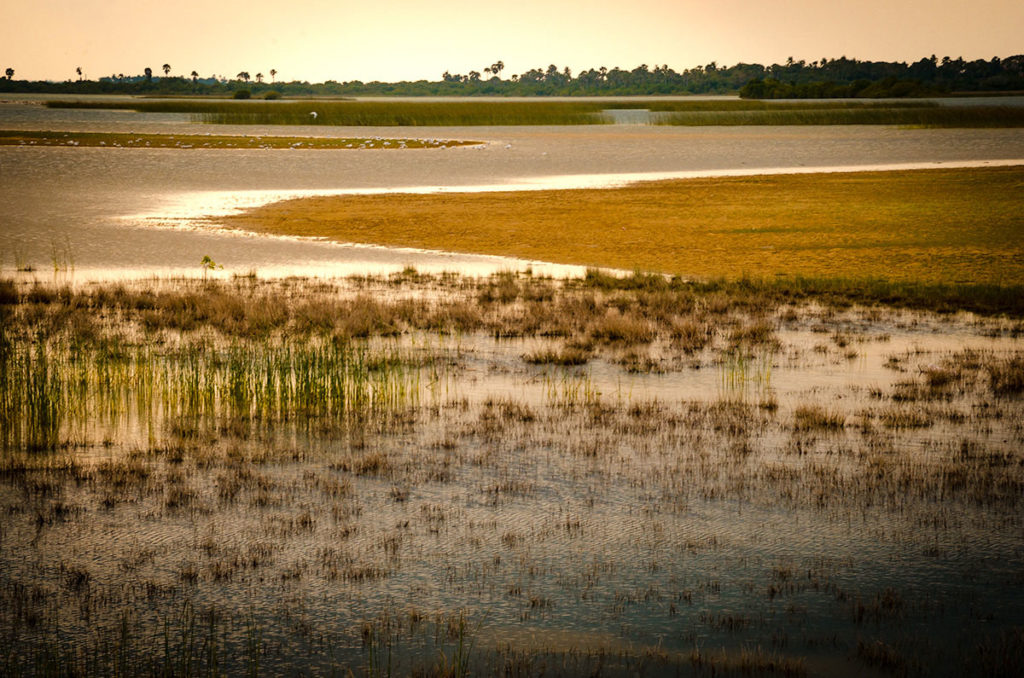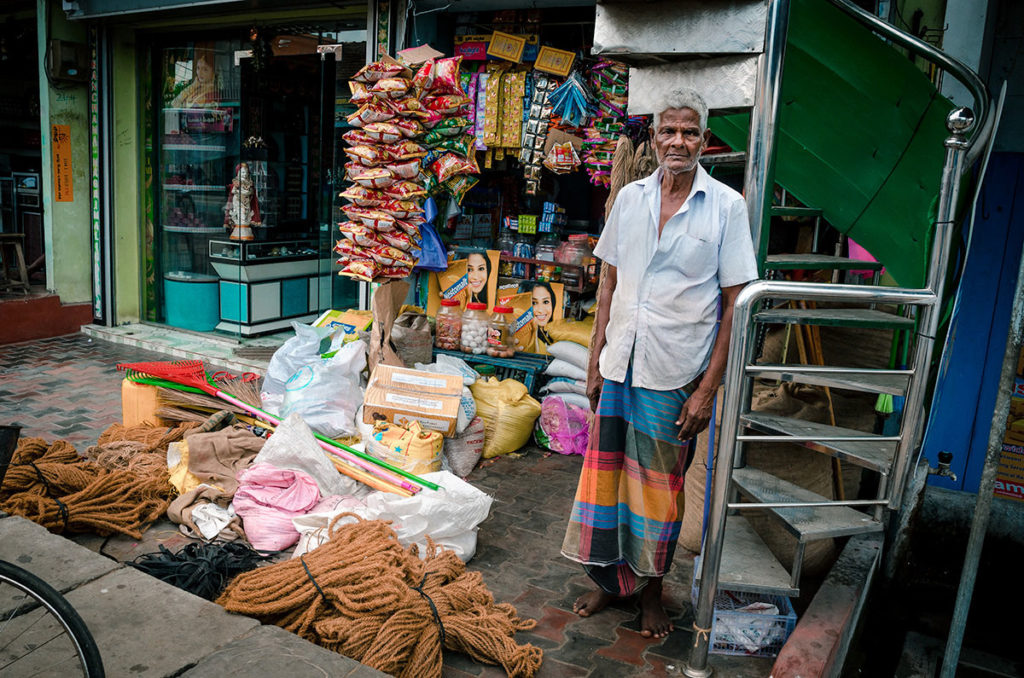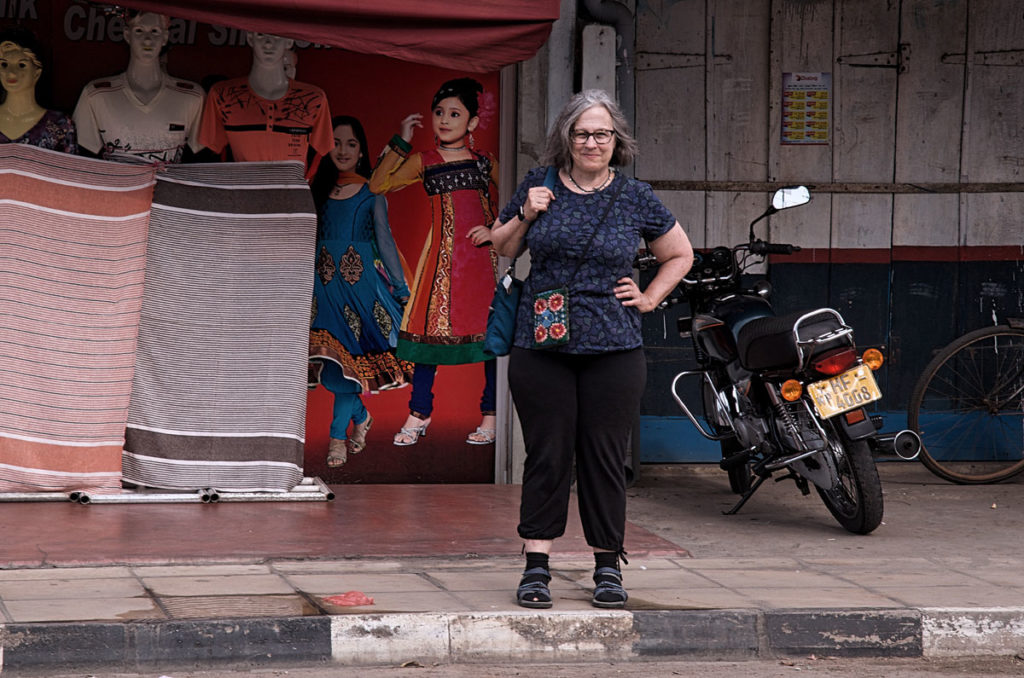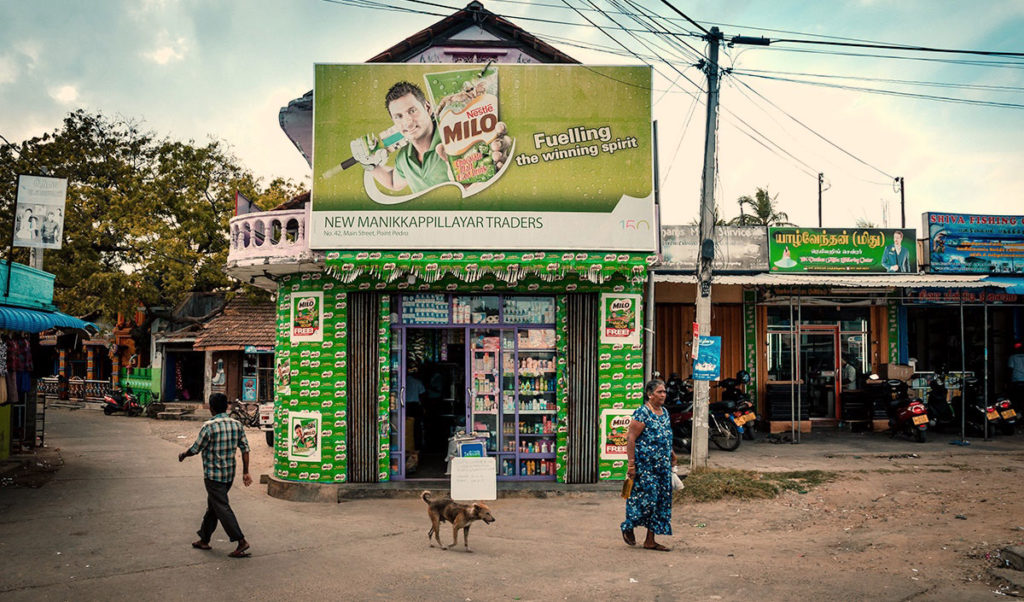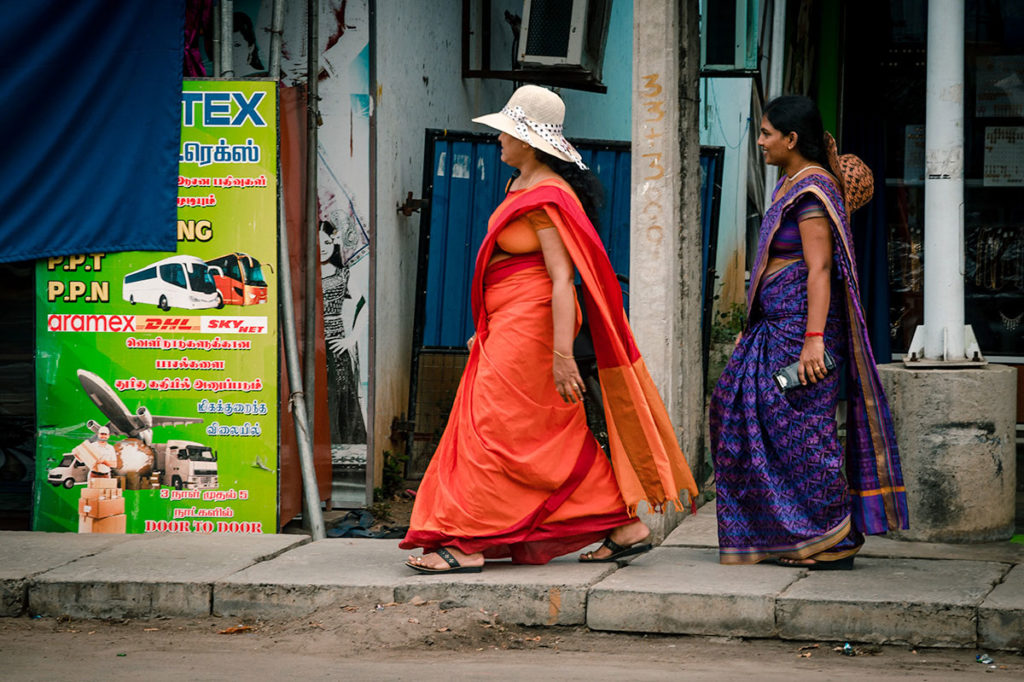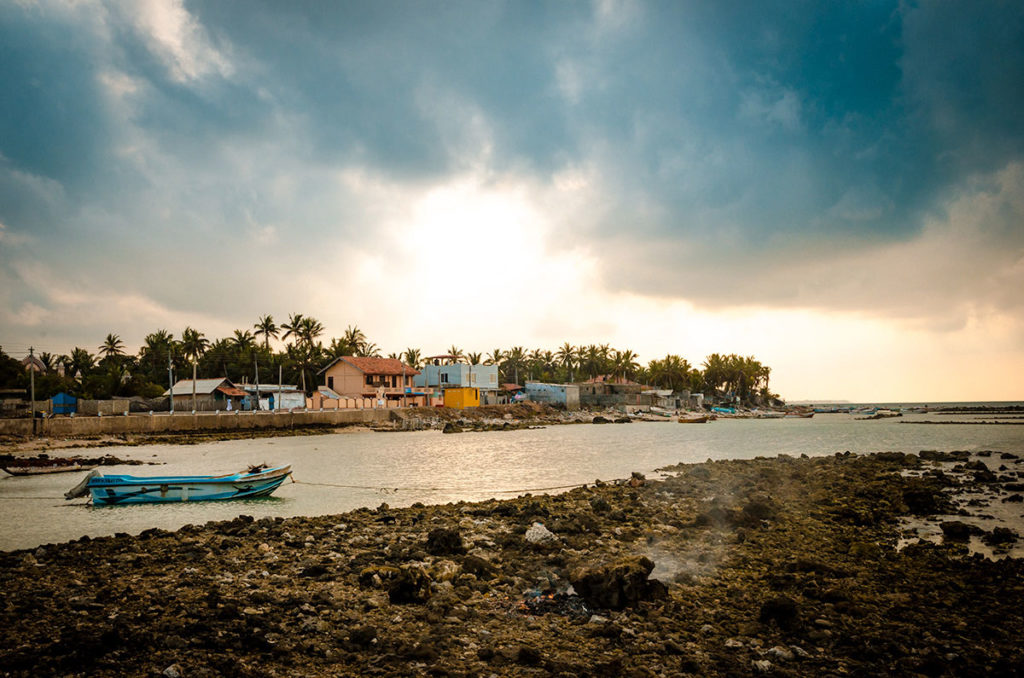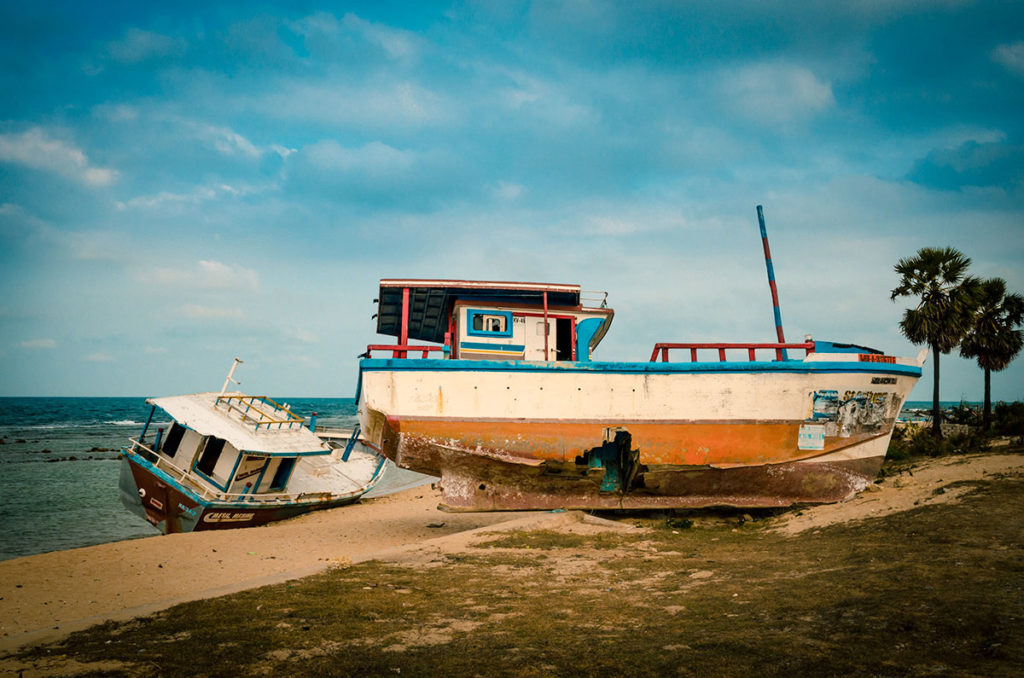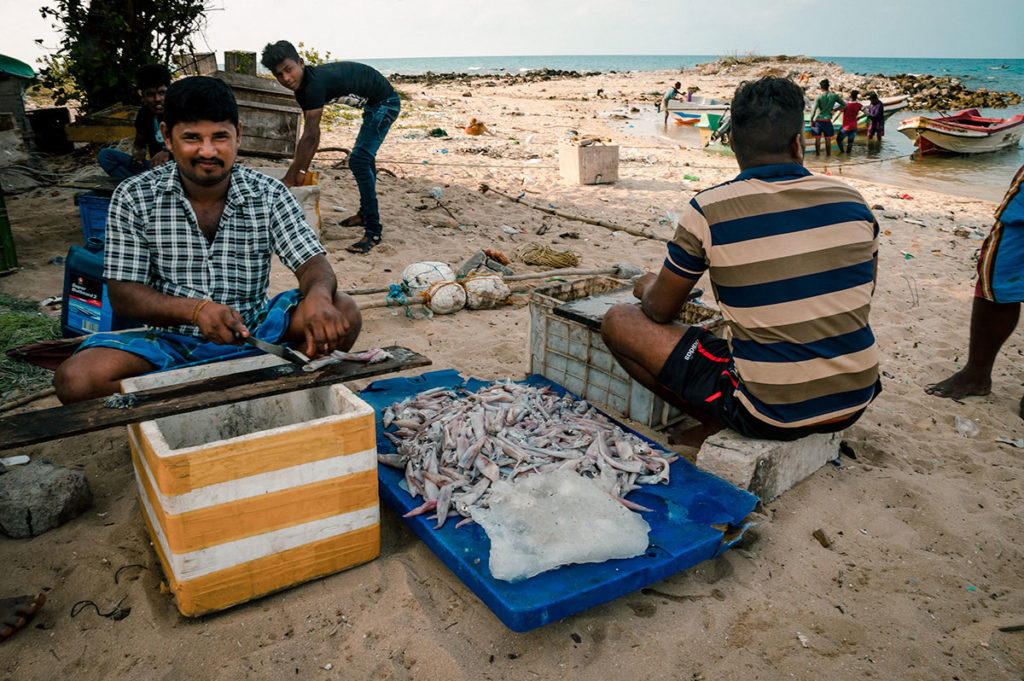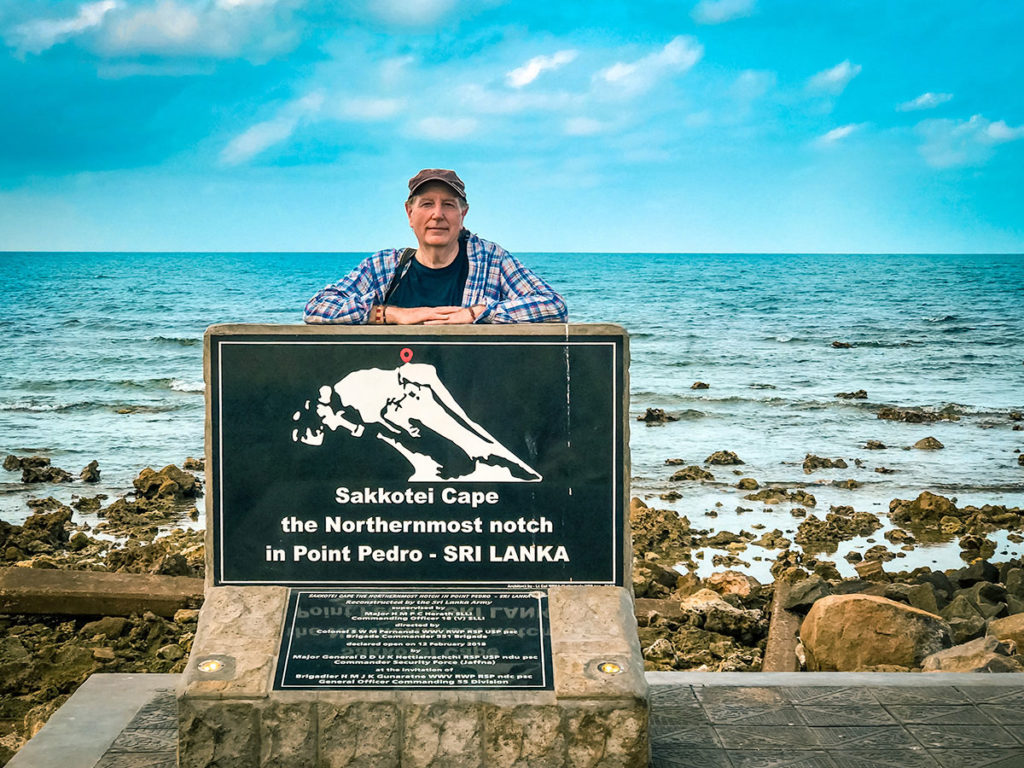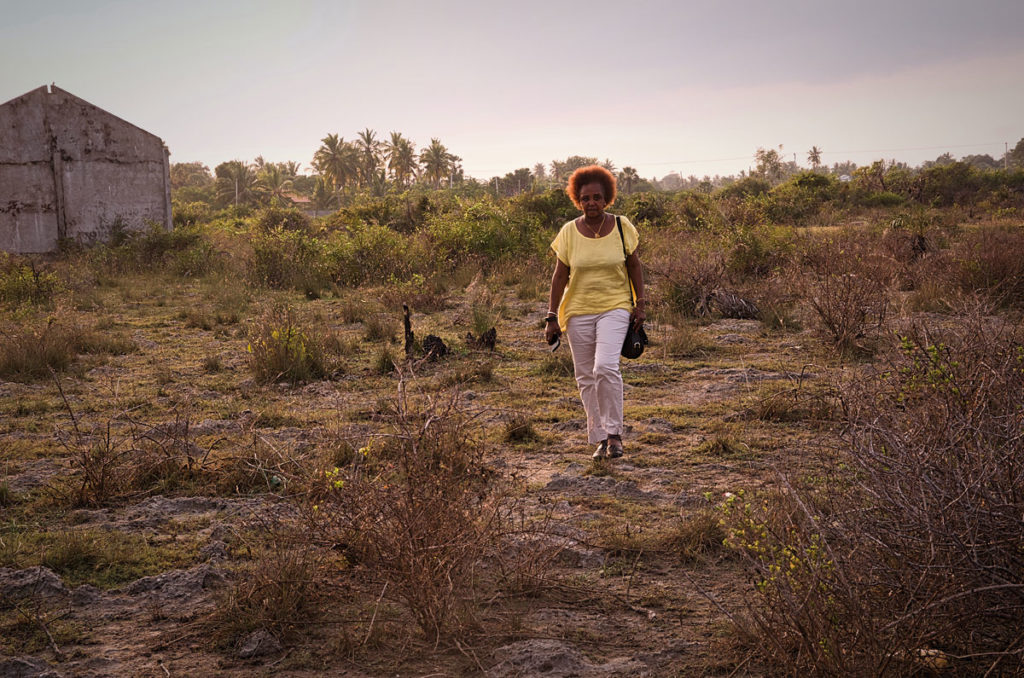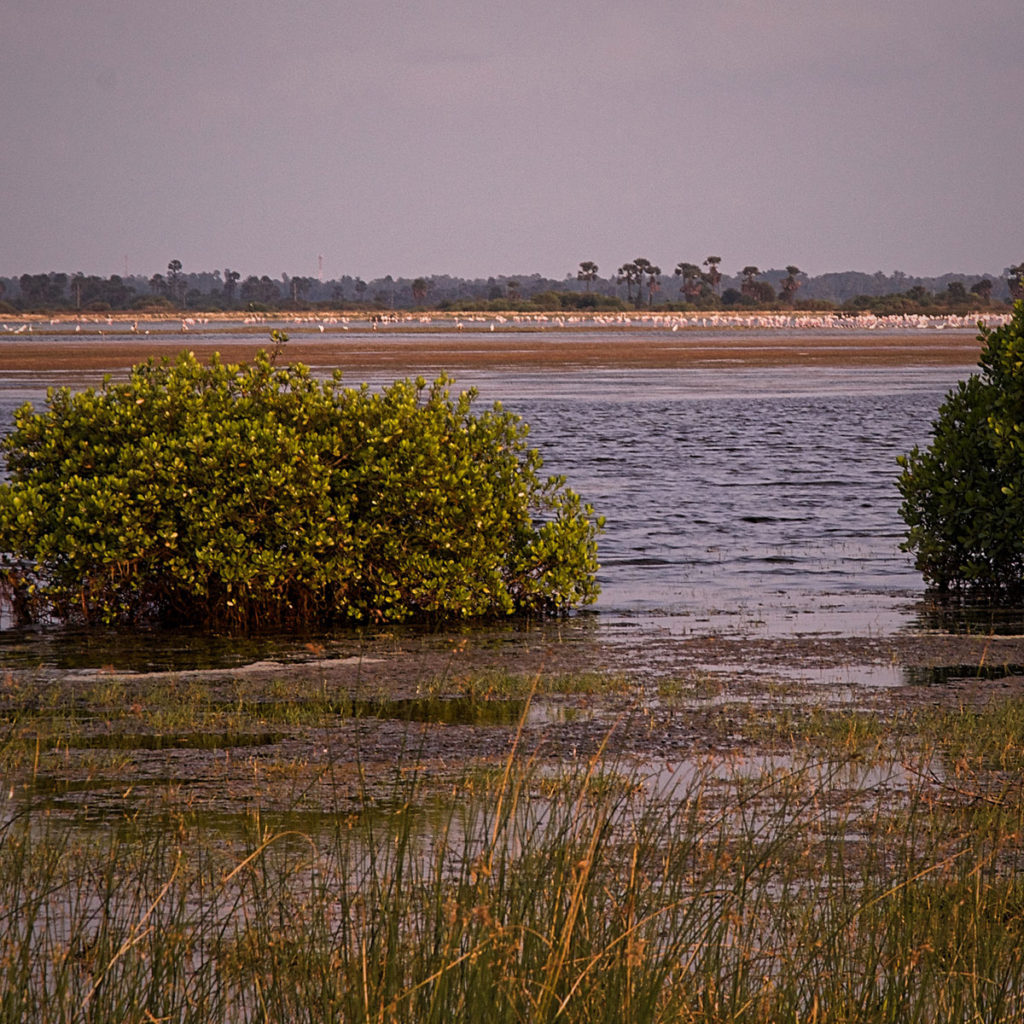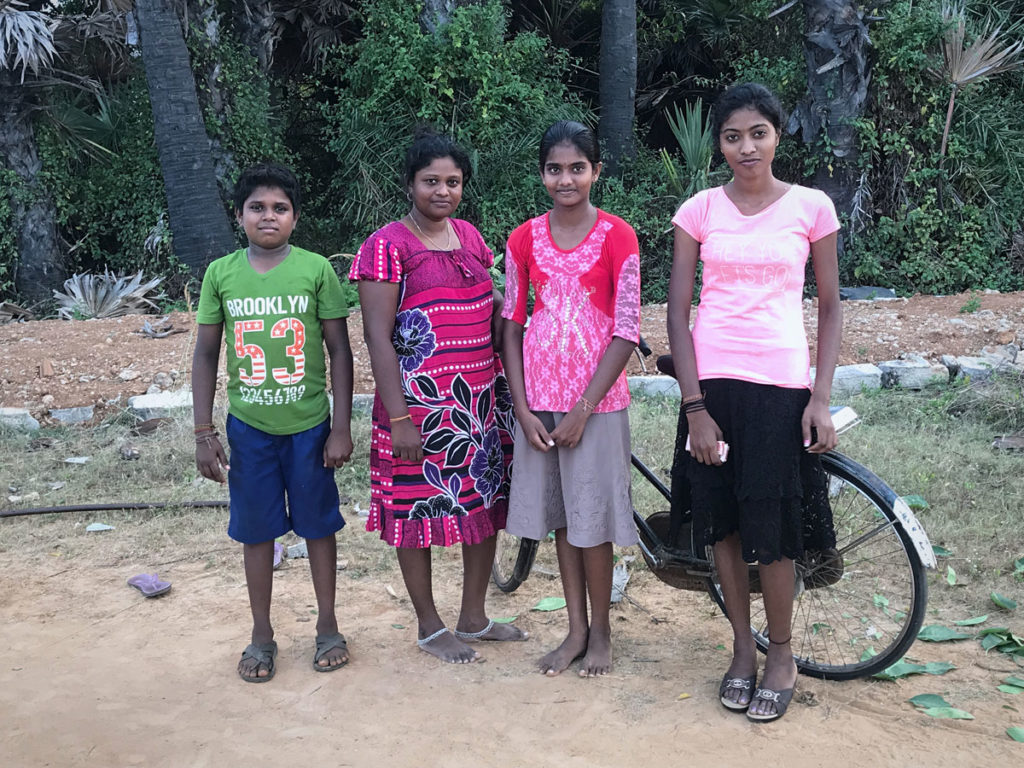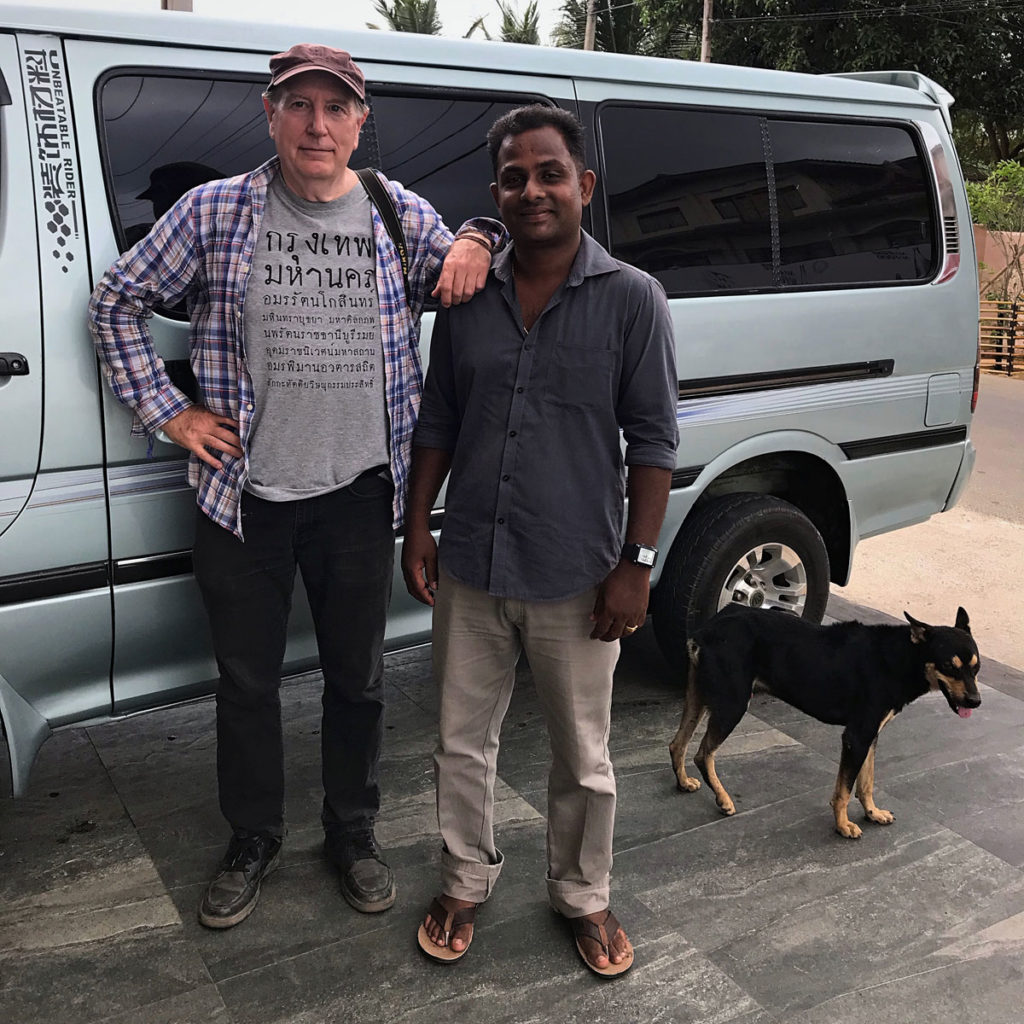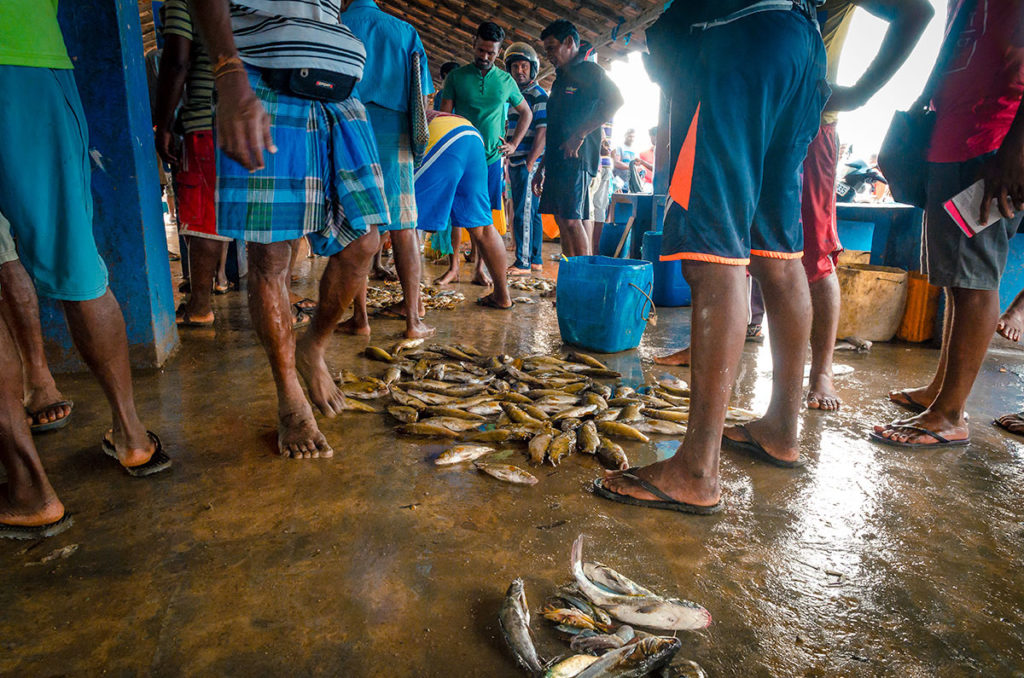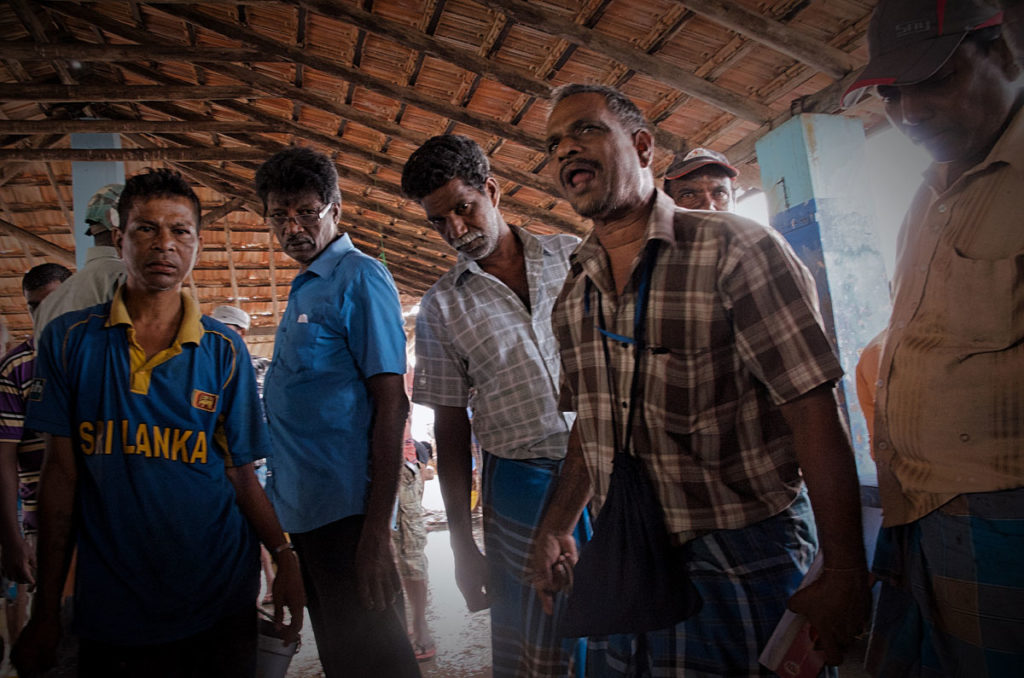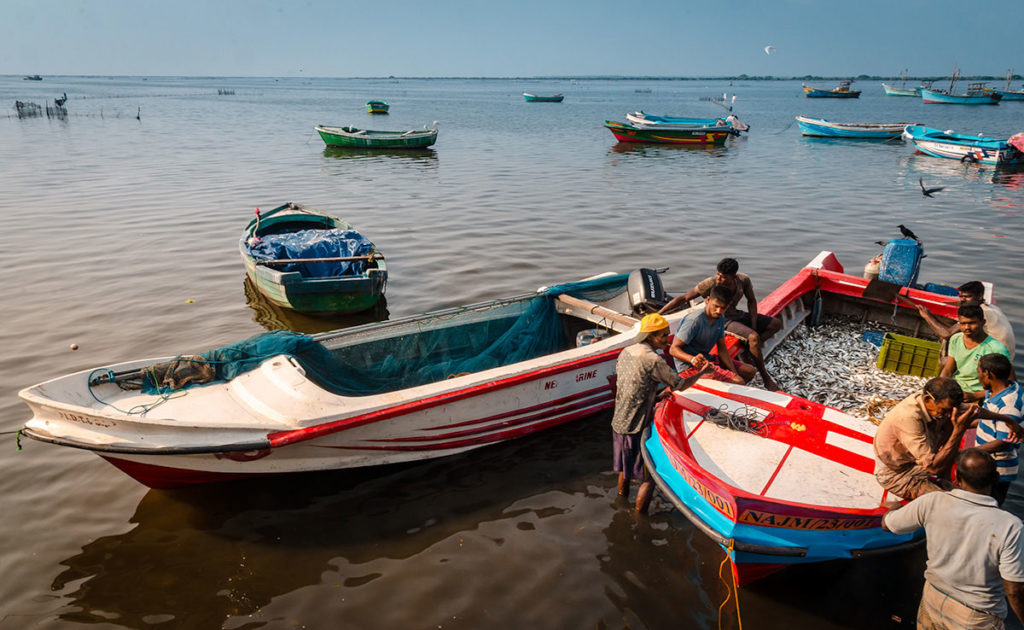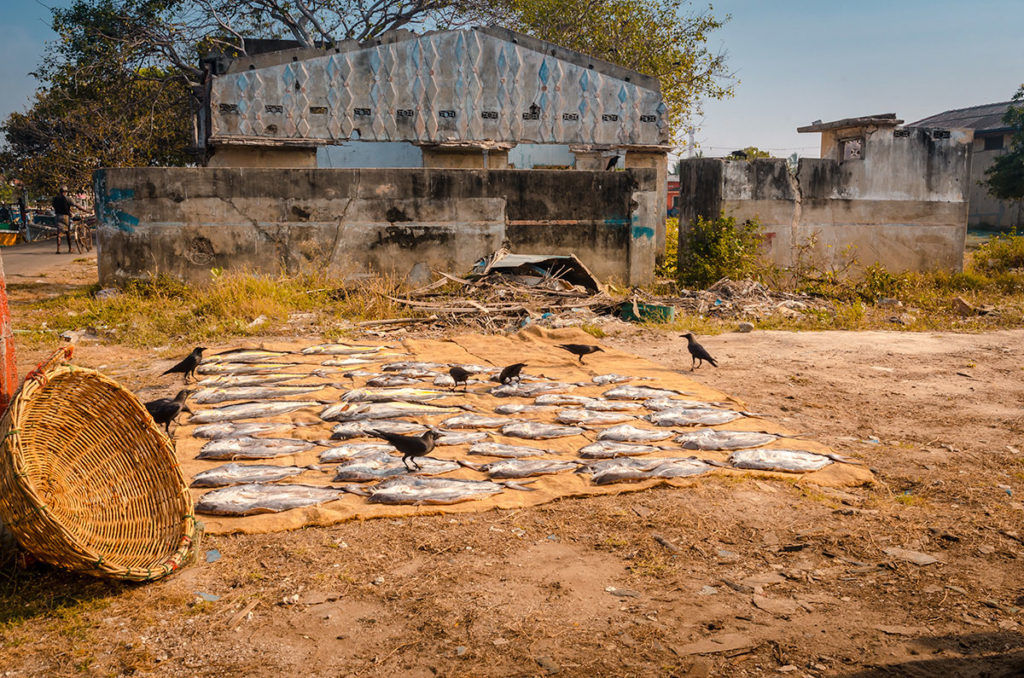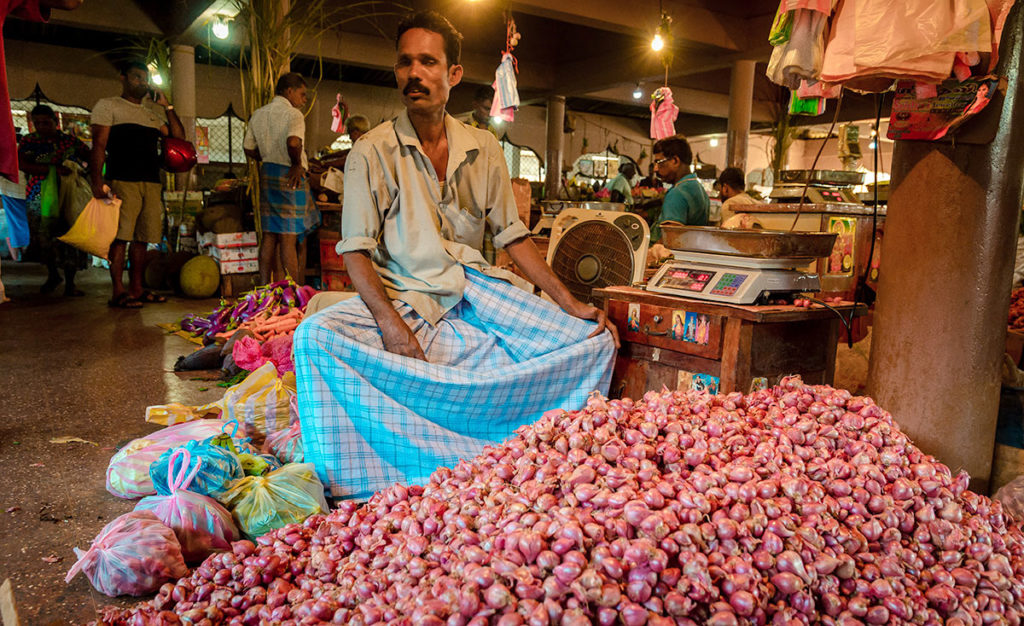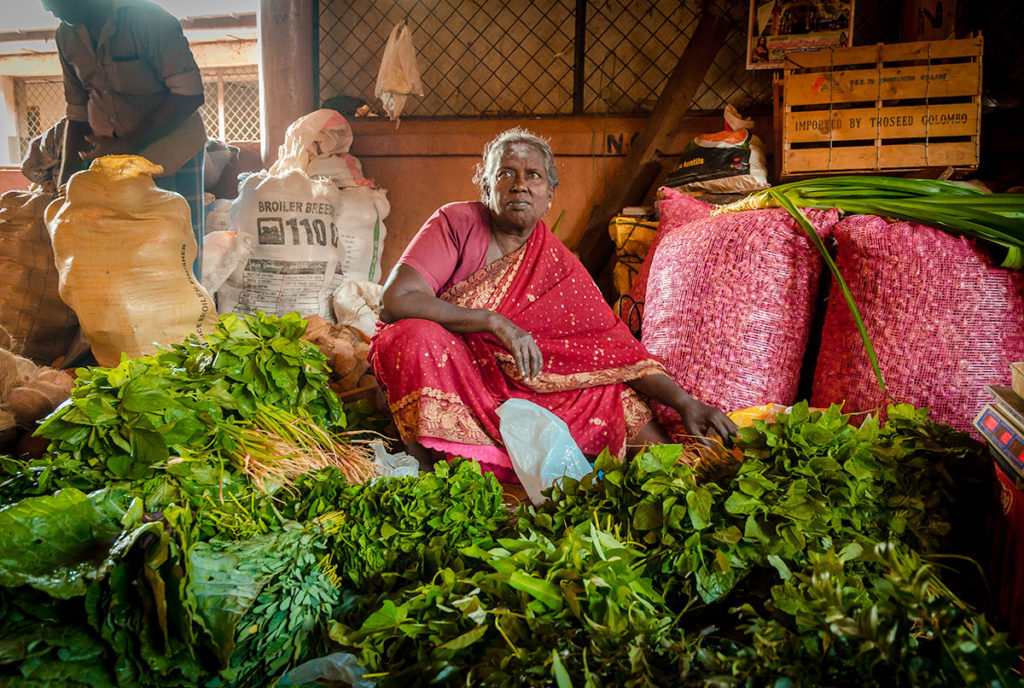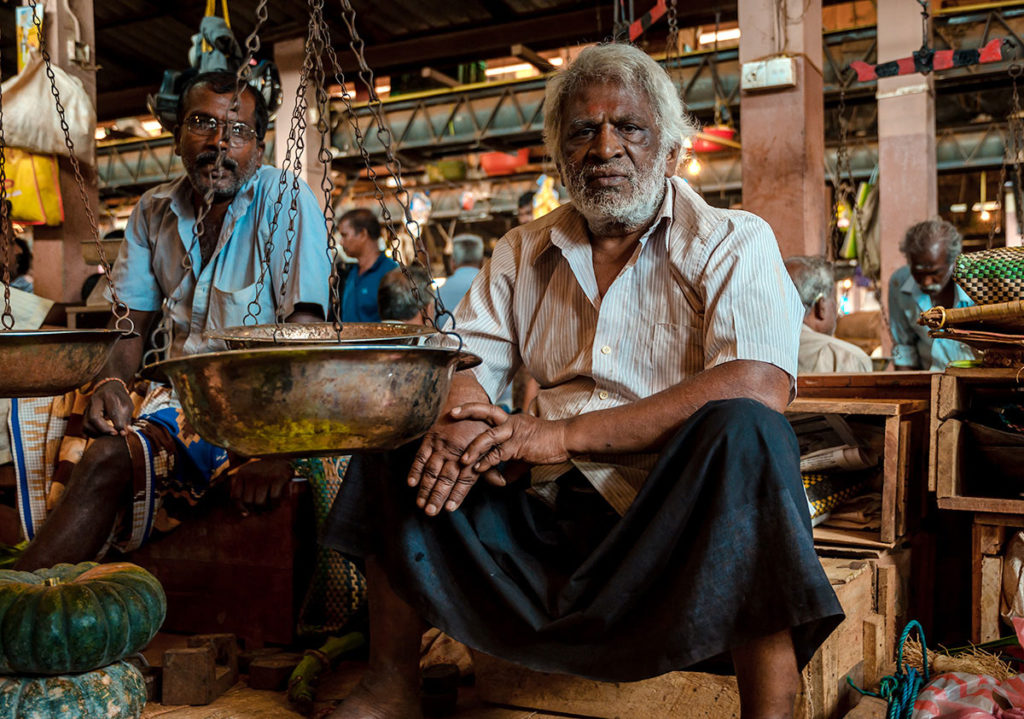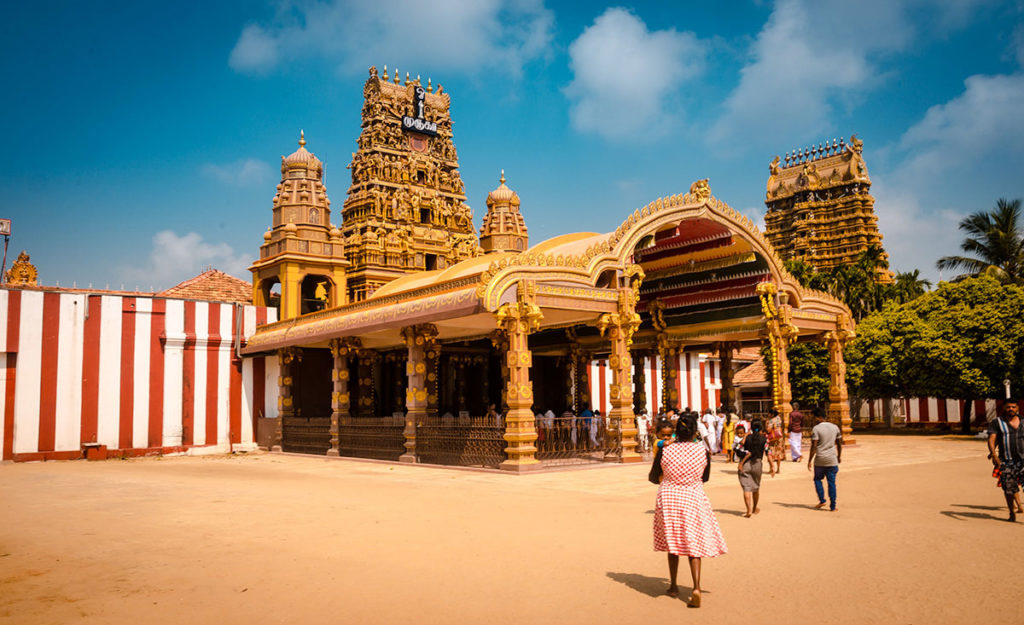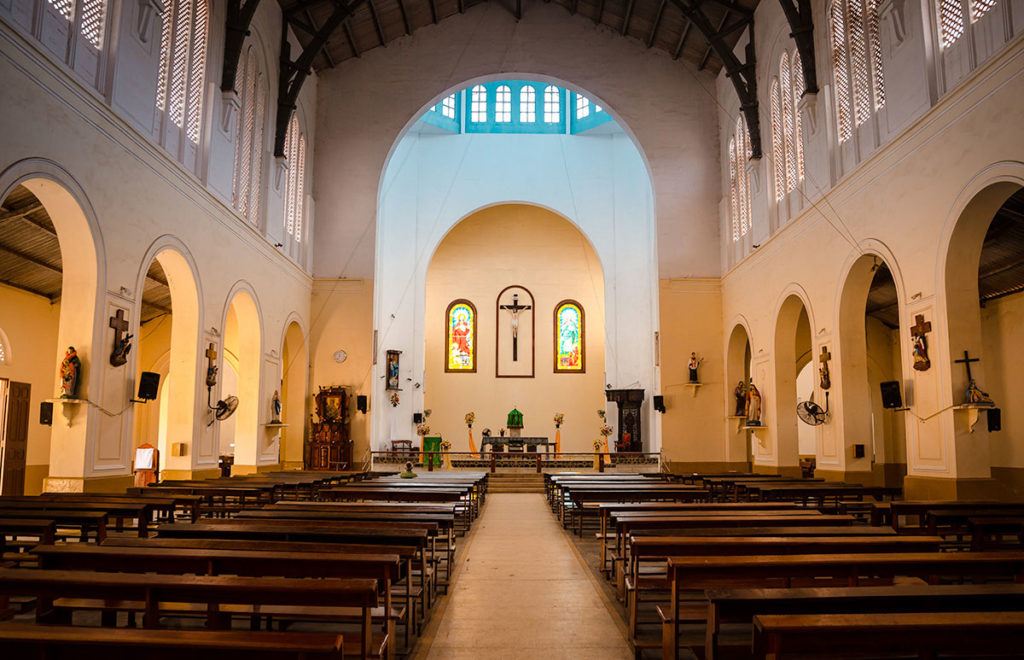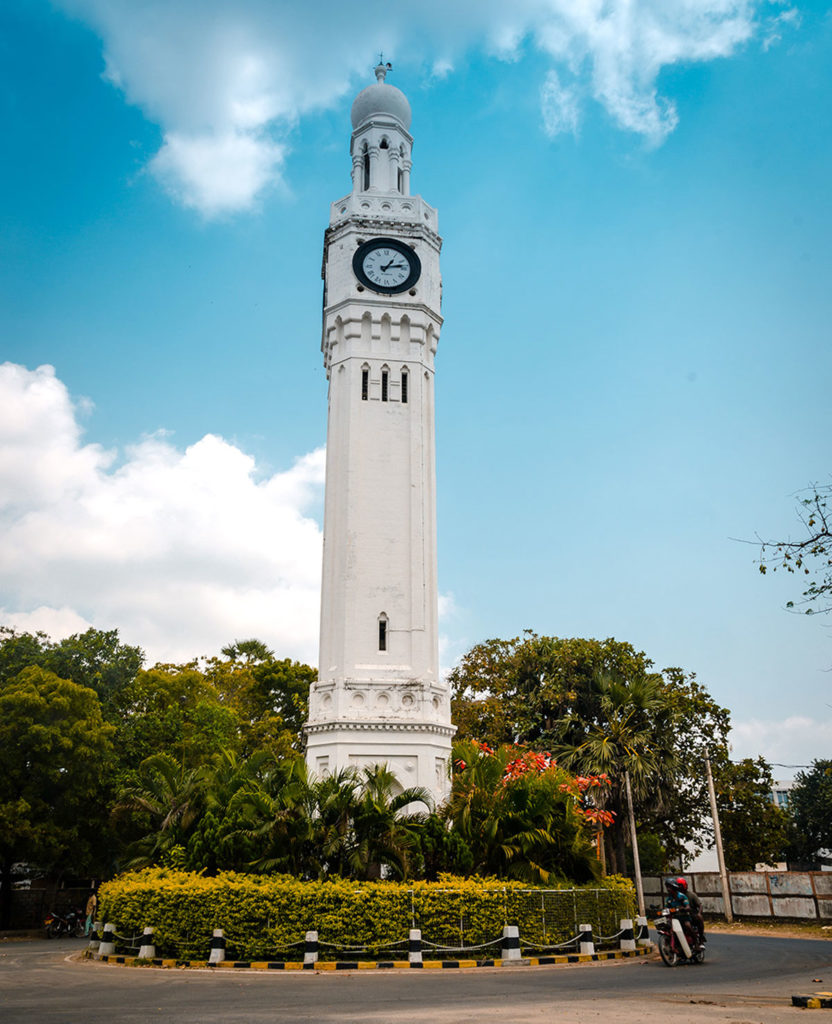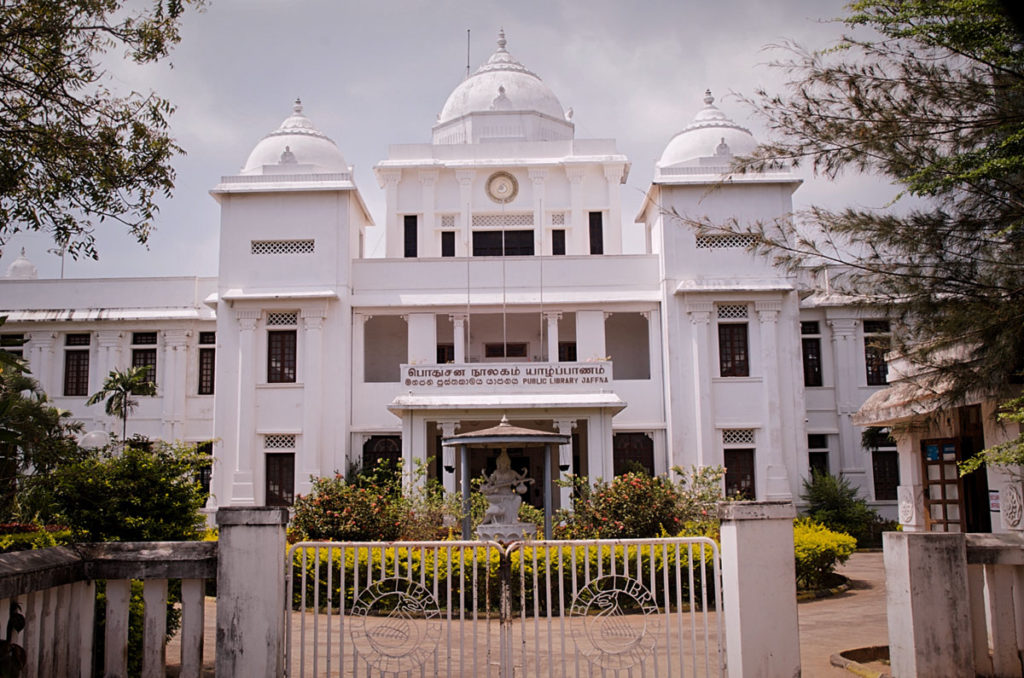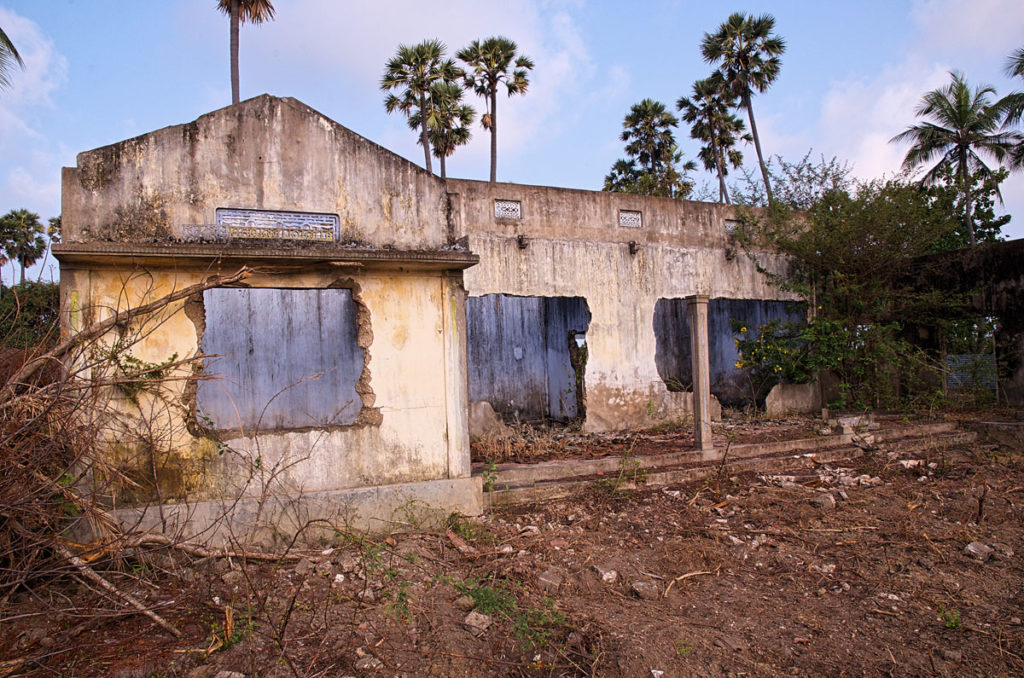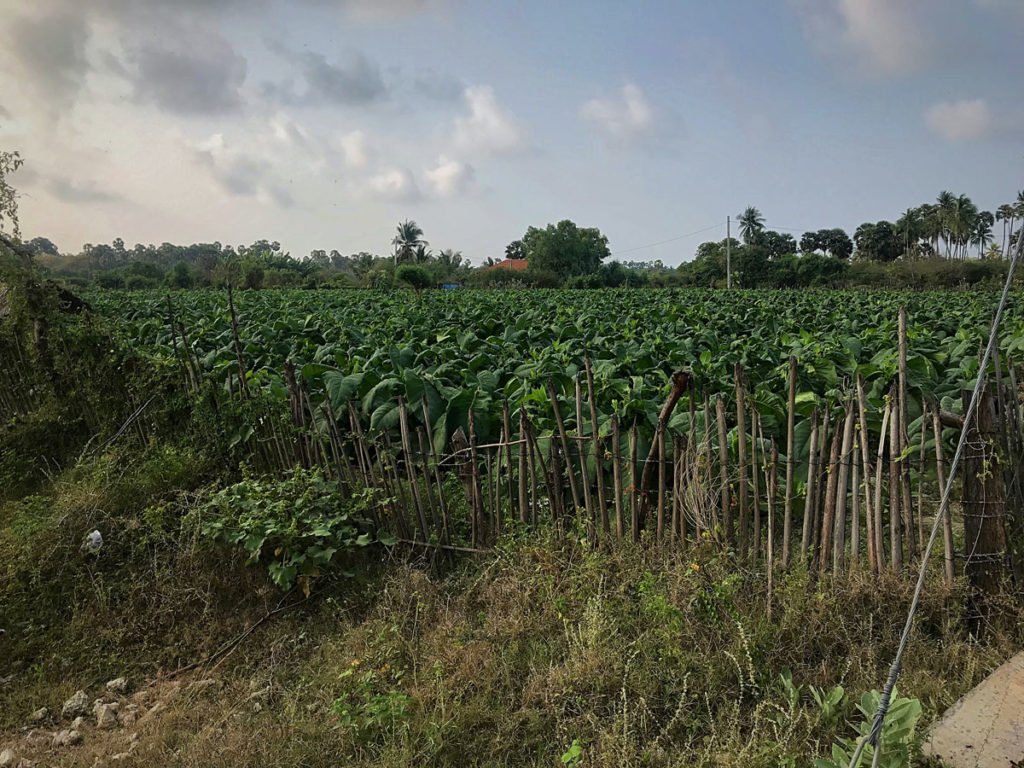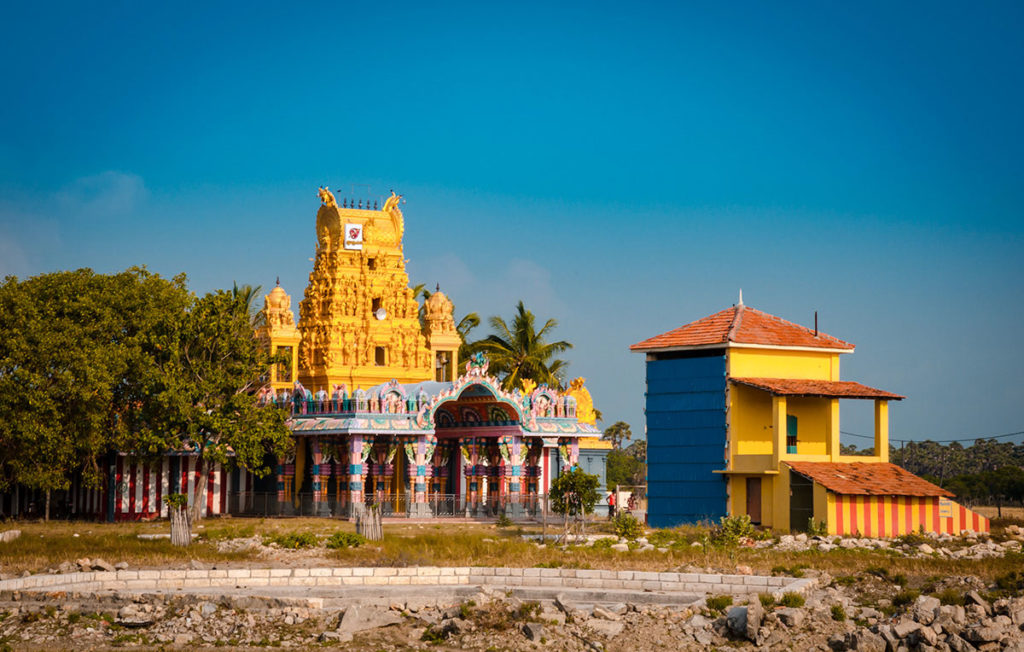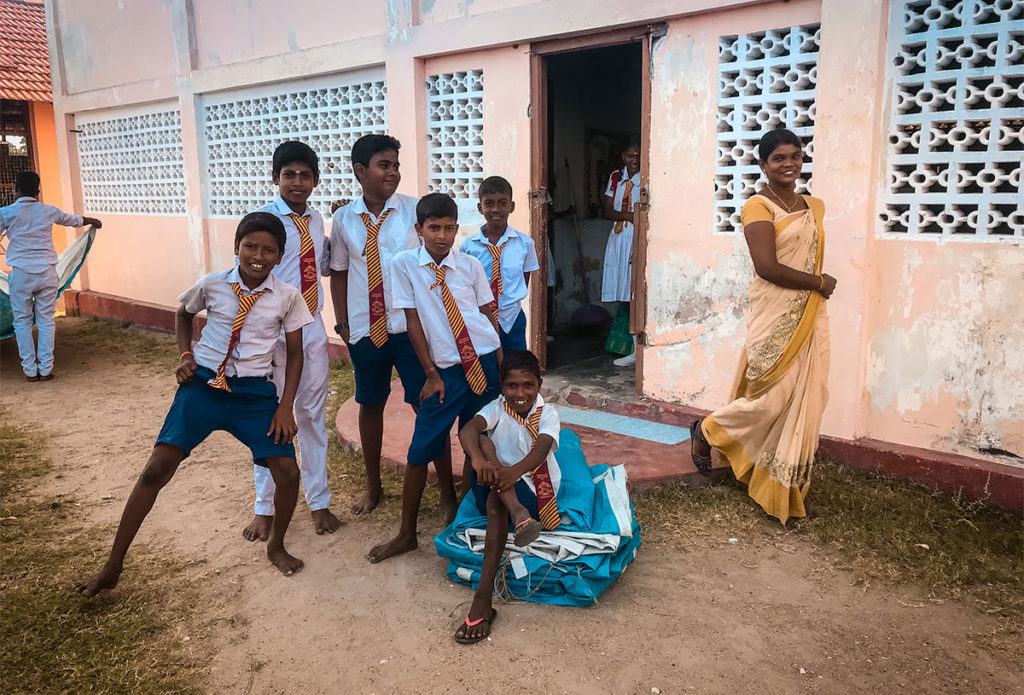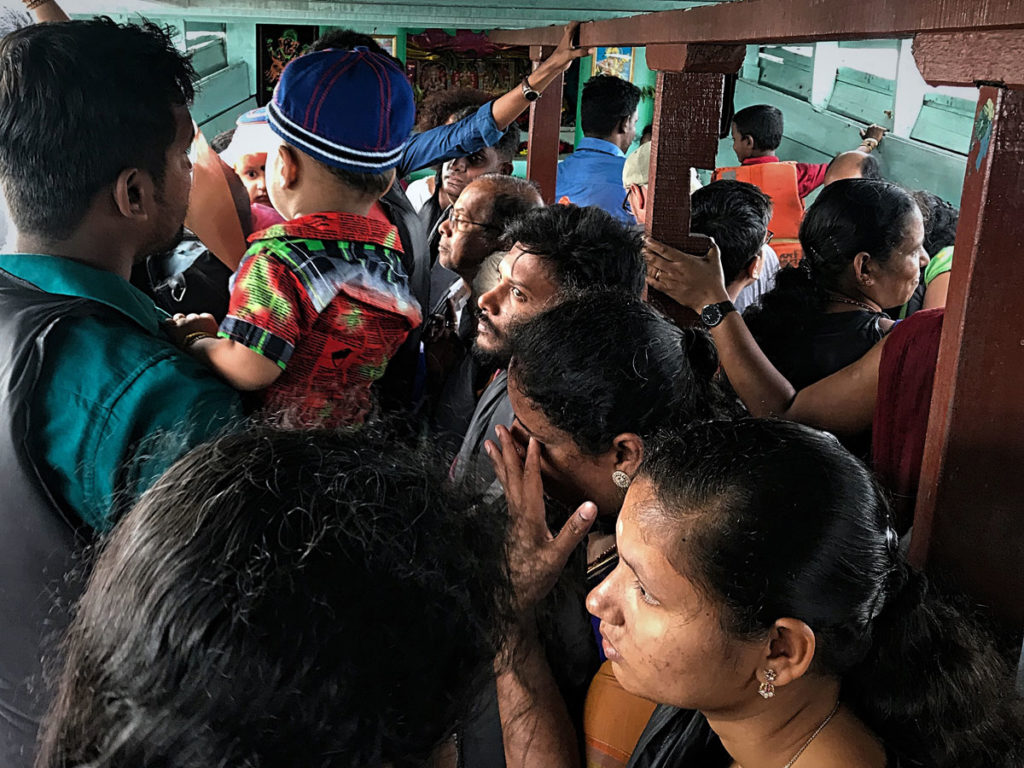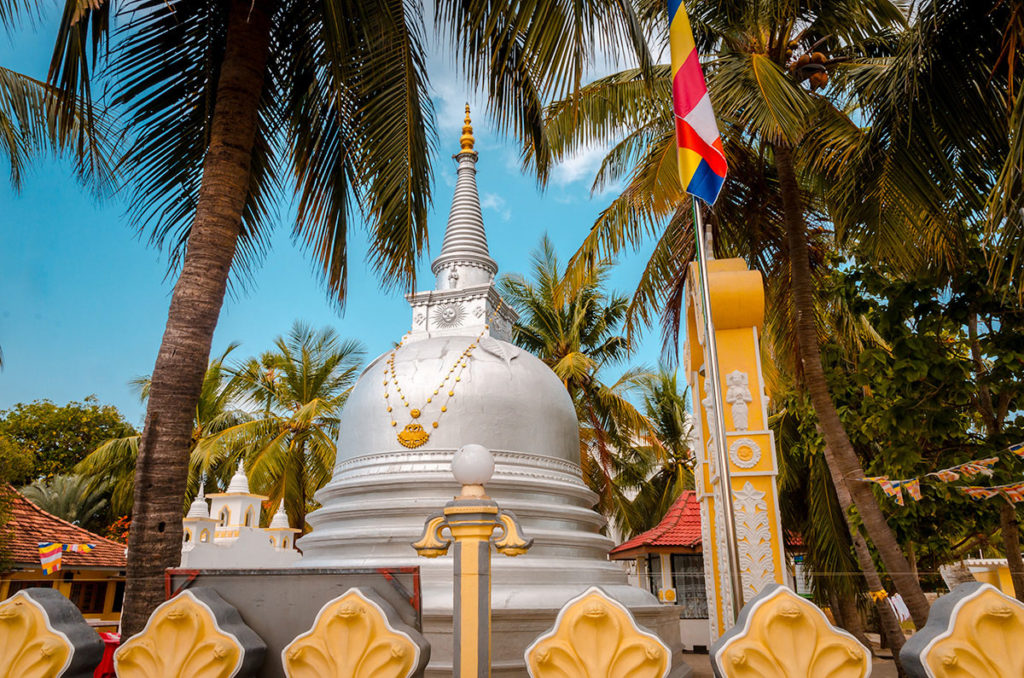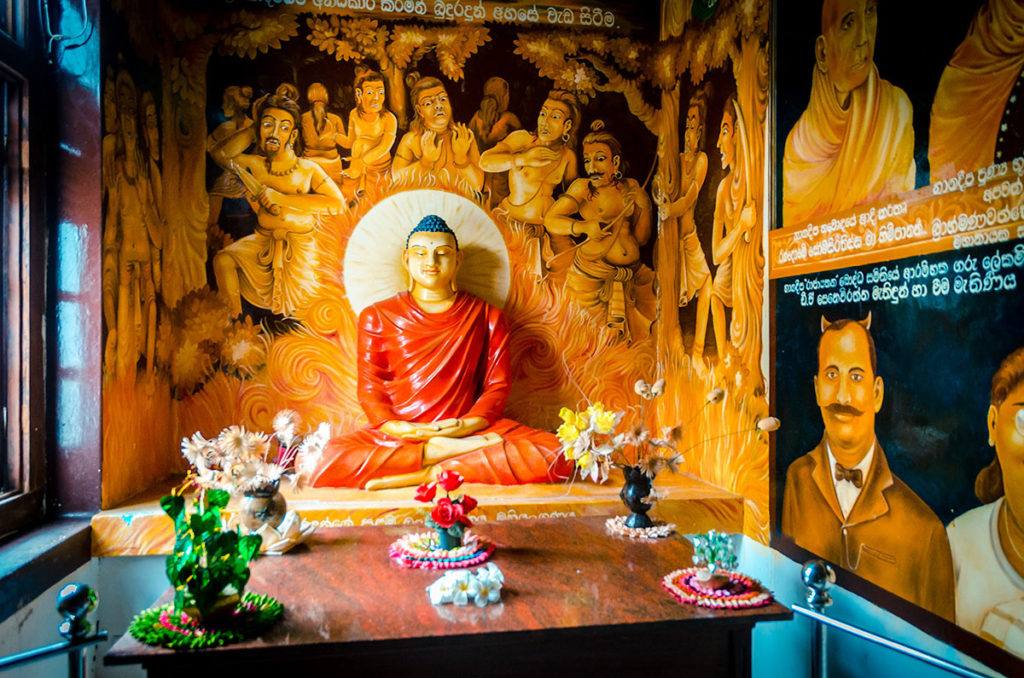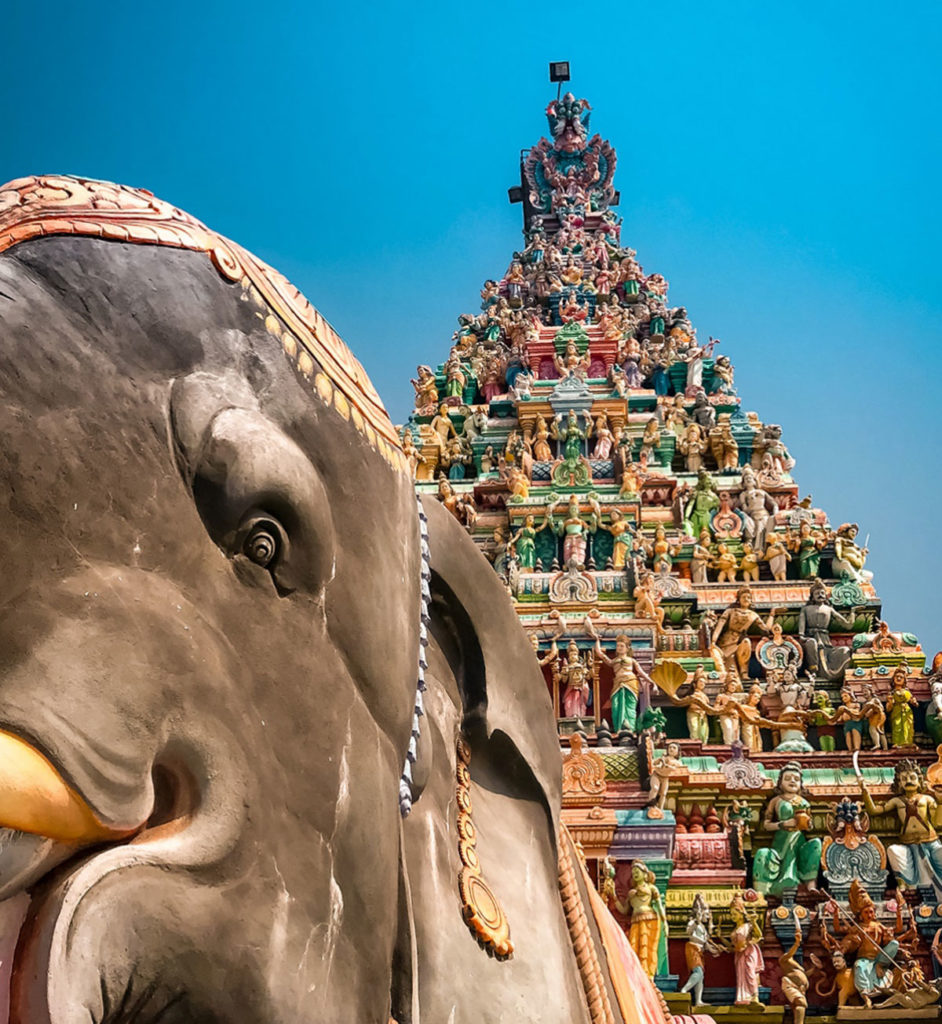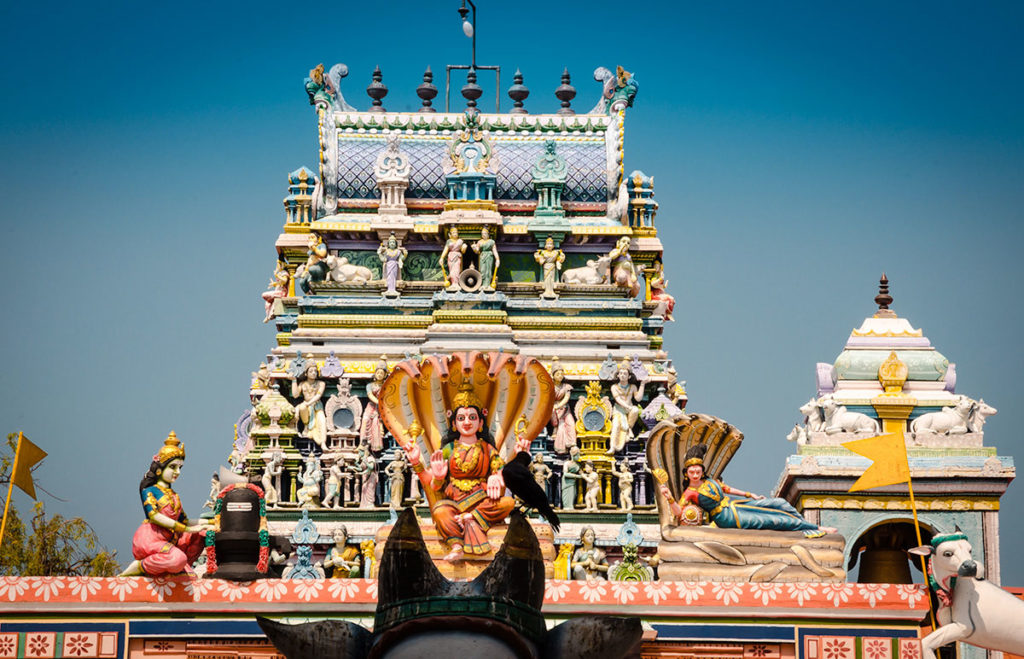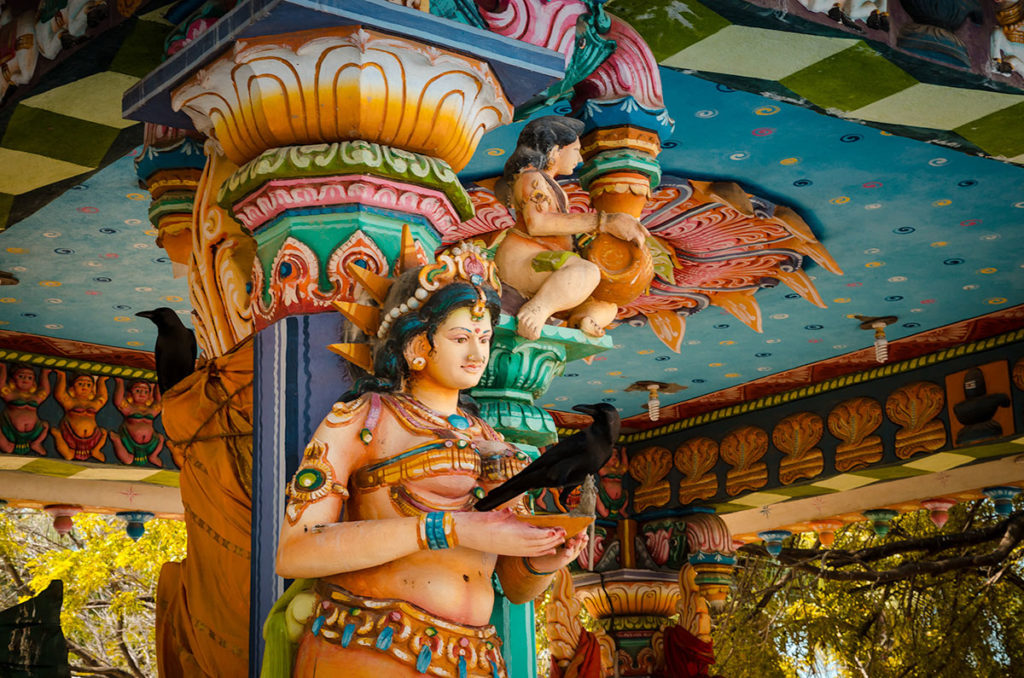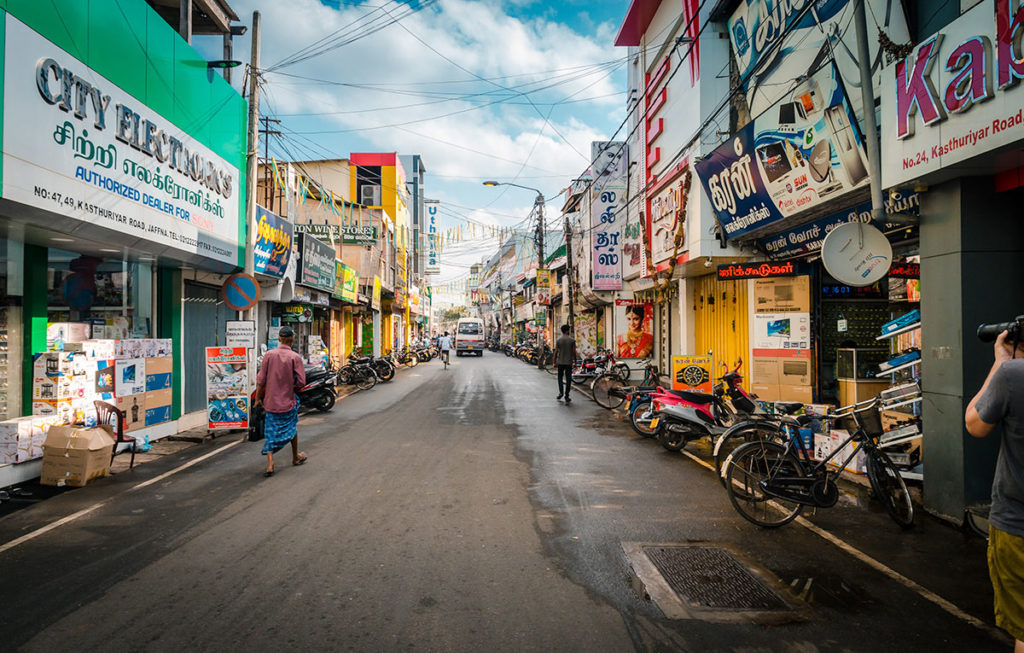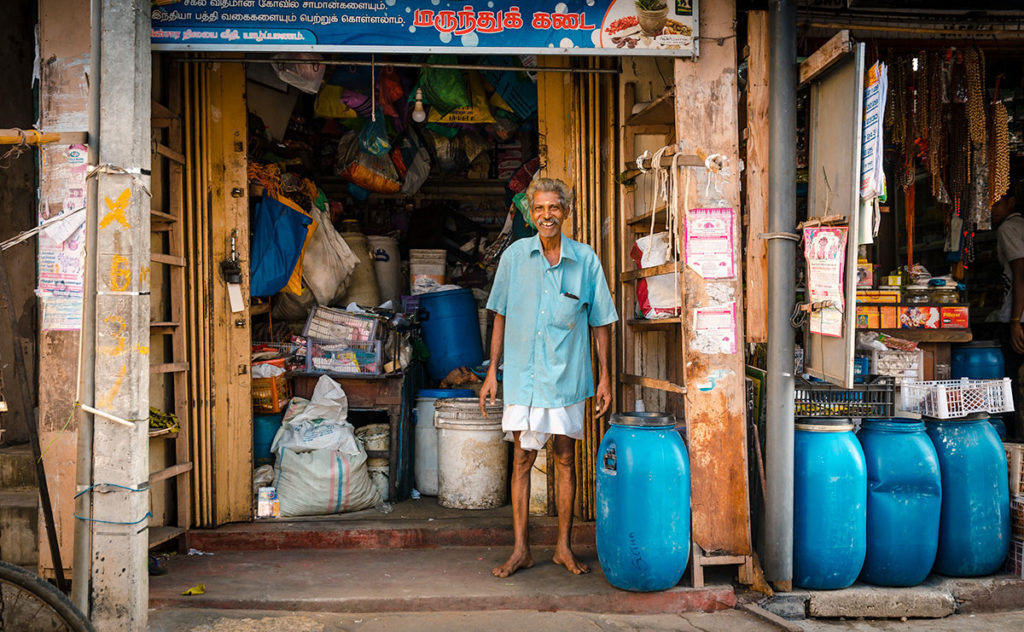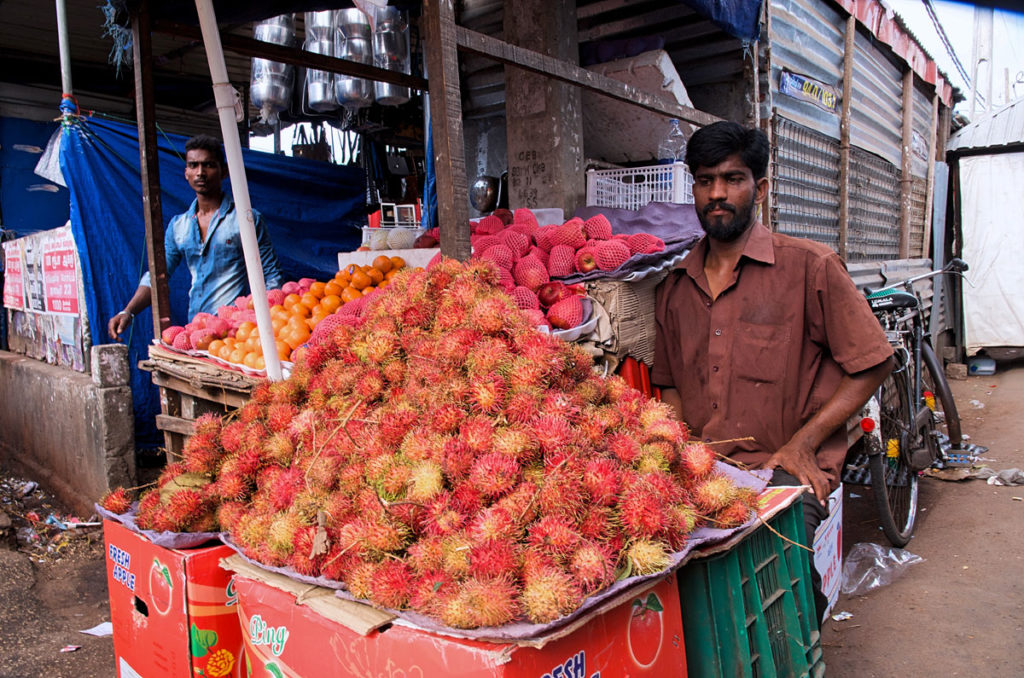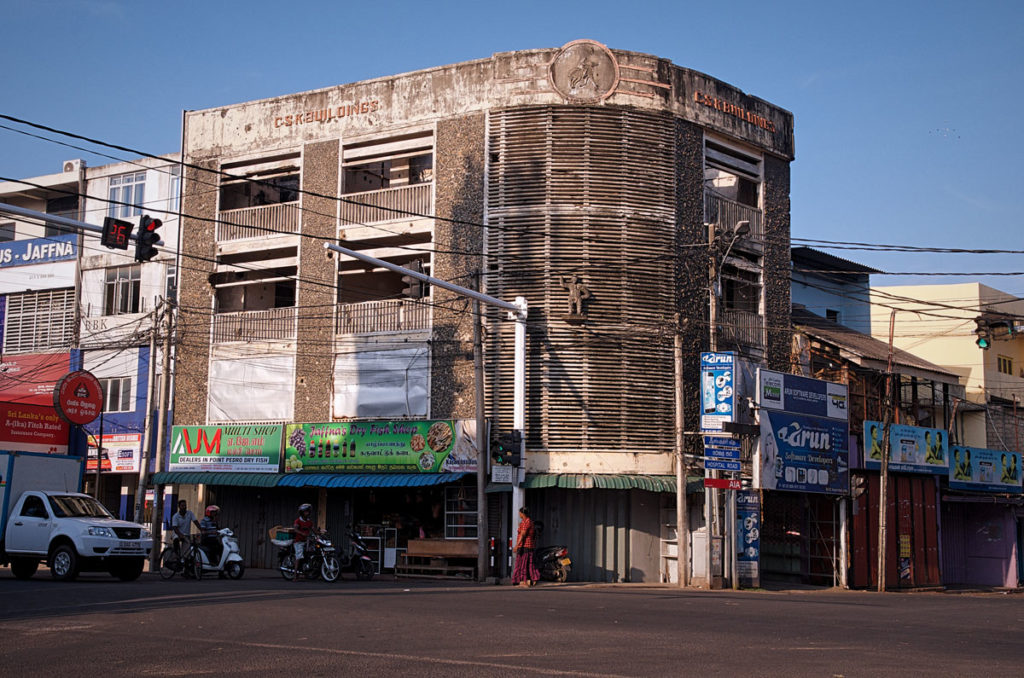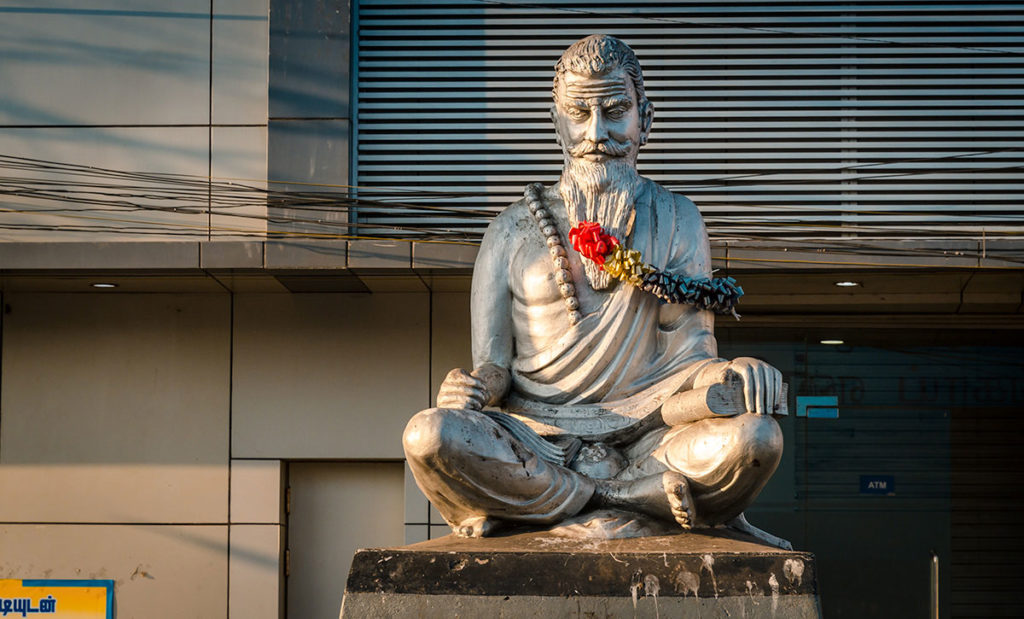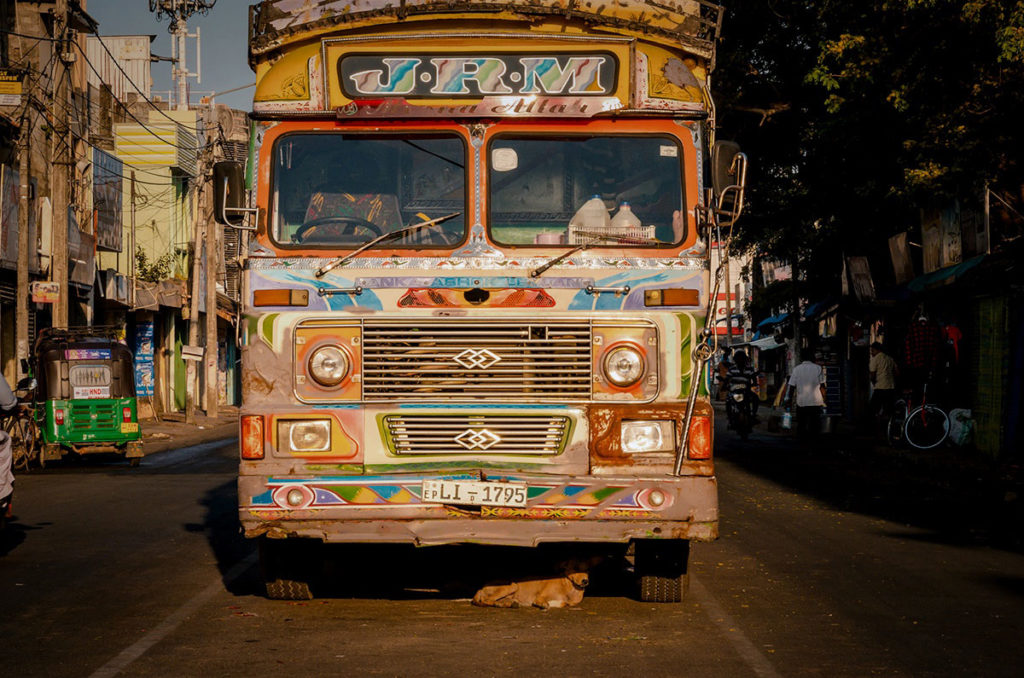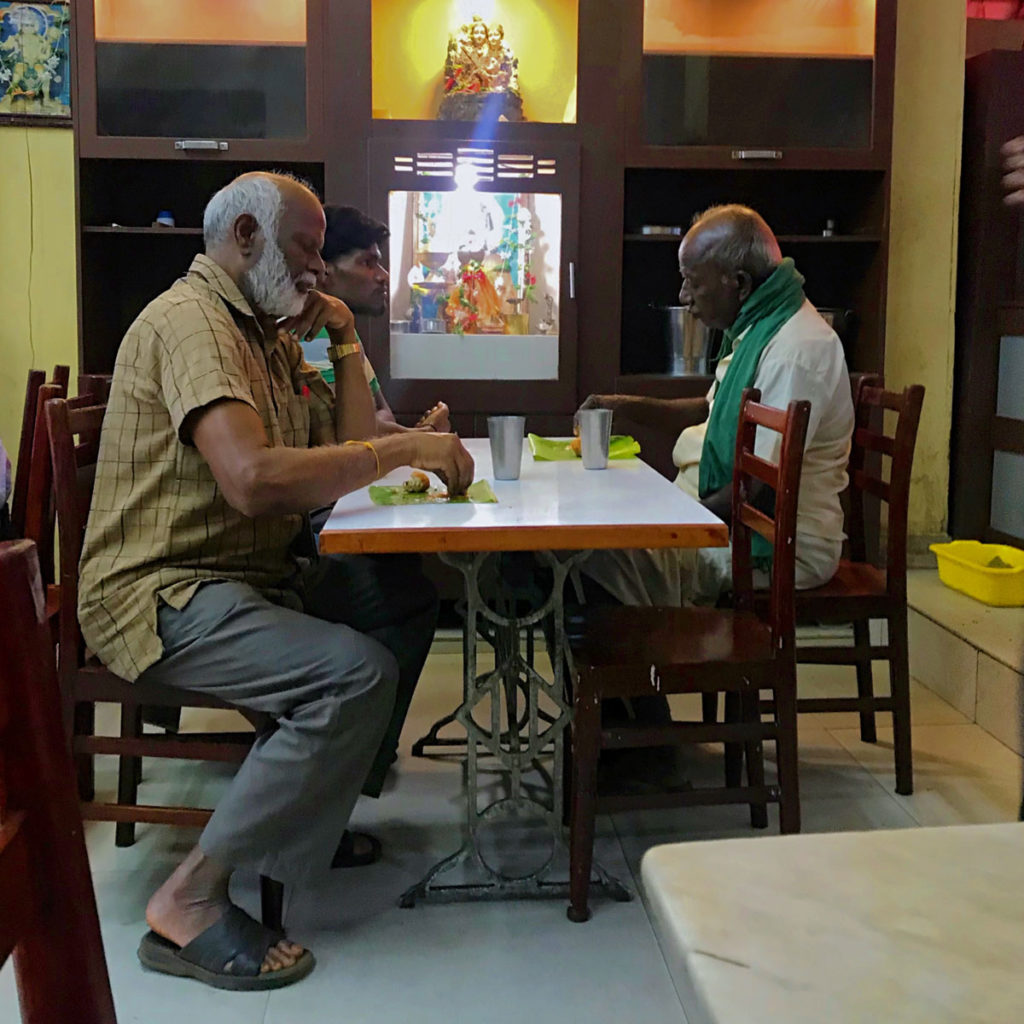Introduction
We entered Jaffna not knowing what to expect. We found the central food market was lively despite decades of civil war…
…the people on the streets were back to living normal lives…
…and families were making pilgrimages to Hindu temples.
However, what never ceases to amaze me is the psychedelic decorations at Hindu temples, including this nine-headed statue at Nagapooshani Temple.
When I saw this, I immediately thought of Jimi Hendrix’s “Axis Bold As Love” album cover.
Our Story
This was the third leg of our journey in Sri Lanka in February and March of 2019, after traveling through Tea Country and the Cultural Triangle. My wife Khadija, Peter, Caitlin and I were looking forward to driving on flat land after two weeks in the mountains.
Our route was from Anuradhapura to Elephant Pass to Point Pedro to the City of Jaffna, where we stayed three nights. One day we went to Nainativu Island.
We used Sri Lanka Click Travel Mate Jaffna for transportation and guides. Mohan was our main contact and organized our trip with full road transportation.
He accompanied us in our ride from Anuradhapura to Point Pedro and provided extensive information on a variety of topics from the Civil War to the numerous bird species in the area. In the early evening, he dropped us off at the high-end Jetwing Hotel where we stayed three nights. It is next to the train station, which was convenient for us when we left for Colombo.
Jaffna City was available to tourist shortly after the Civil War ended in 2009, but initially few wanted to take the risk of going here. The whole peninsula is open to visitors, without roadblocks and security checks, except for the army bases scattered throughout. There were relatively few international tourists during our visit, except for Buddhist pilgrims who often traveled in organized tours.
Elephant Pass Bulldozer Memorial
We left Anuradhapura around noon and drove north on Highway 9A until we reached Elephant Pass, the entrance to the Jaffna Peninsula. Elephant Pass is a land bridge that connects the Jaffna Peninsula to the rest of the island.
The first site we visited was the Bulldozer Memorial which commemorates a Sri Lankan soldier, who by himself, disabled and destroyed a Tamil Tiger armored bulldozer. The bulldozer is mounted on a pedestal with a hole on one side.
The description of the Civil War is from the viewpoint of the Sri Lankan government (victors write the history). Tamils and their sympathizers may have a different interpretation.
While this is a travel and photography blog, in this case, the basics of the Sri Lankan Civil War from 1983 to 2009 is helpful to know. See my summary of the conflict at the end of this post.
Marshes
After crossing Elephant Pass, our introduction to the Jaffna peninsula was long stretches of marshes rich in birdlife (including ibis, storks, and pelicans). I did not try to photograph them because we had little time to stop and the birds were far from the highway. However, I did take this shot of the beauty of the marshes.
Point Pedro
We arrived in the small community of Point Pedro in the northernmost part of the island. It was still recovering from the 2004 devastating tsunami. We walked around the town looking at the shops, including one selling food and fishing supplies…
…large rolls of fabric which Caitlin was admiring…
…a general store with health care products…
…and two women walking with their sun hats.
There is a string of fishing villages on the coast…
…with abandoned boats…
…and fishermen hard at work.
We stopped at the Sakkotei Point, the northernmost point in Sri Lanka.
We walked across the marshes to see if we could see a flock of flamingos…
…finally, we saw them, albeit in the far distance…
On the way back to the road, we met the following children, one with a Brooklyn T-shirt. Somehow these have migrated to all parts of the world.
Jaffna City
Jaffna is the capital of the Northern Province and opened up to tourism just after the war ended in 2009, much earlier than the rest of the peninsula. Our Click Travel guide was Prasana, who had extensive knowledge about the sites we visited.
We could have arranged everything ourselves by reading the guidebook and taking taxis. However, we found this was more efficient and we benefited from Prasana’s knowledge of the area.
Fish Market
The first thing we did was go to the fish market on the coast. In a covered pavilion, the fishermen spilled their catch on the concrete floor…
…and then the buyers bid in a series of quick, but lively auctions.
Outside the fishermen were bringing their catches to shore…
…and the crows were snacking on drying fish.
Central Vegetable Market
One of the best ways to get to know Jaffna and locals is through the central market. The vendors were generally willing to speak with visitors. Here a man showed us a picture of his younger and good-looking self.
There were many memorable individuals, including this man with his shallots…
…the woman with lettuce and dry foods…
…and these men selling squash.
The fruit, vegetables, and fish looked very fresh and were almost all local.
Nallur Kandaswamy Temple
The most important site in Jaffna is perhaps the Nallur Kandaswamy Temple. It is a Hindu temple dedicated to the god of love, war, and beauty. We found out there is a strict dress code. Men are not allowed to wear anything above the waist, and women need to have their knees covered. We spent over a half-hour listening to Prasana explain the stories behind the wall murals. No photography was allowed inside, but here is the exterior.
Other Jaffna City Sights
We stopped at St. Mary’s Cathedral, the seat of the Roman Catholic Diocese of Jaffna. While most Tamils are Hindu, there is a significant number of Christians among them. I found the interior austere by Roman Catholic standards.
Some structures are from the British colonial era, such as this clock tower built in 1875 to commemorate the visit of the Prince of Wales…
…and the Jaffna Library which was built in 1933 and severely damaged in the Civil War by fire in 1991. It took a decade to restore the building, though thousands of valuable manuscripts and books were lost.
Drive to Nainativu Island
Nainativu (or Nagadeepa) is a sparsely populated holy island, about 40 kilometers (24 miles) from Jaffna. It is known for the Buddhist Nagadeepa Shrine and the Hindu Nagapooshani Temple.
On our hour and a half drive, over two causeways, we saw homes destroyed in the Civil War…
…tobacco fields…
…Hindu temples…
… and schools with students in uniforms but no shoes.
At the end of the road, we had to take a small, crowded boat to the island with the passengers under the deck.
Nagadeepa Purana Vihara
The site is known as the place where Buddha came during his second visit to Sri Lanka to mediate a dispute between two local kings. The original temple was destroyed, replaced by a modern one. The large stupa is coated in a special silver paint as protection from persistent sea-wind.
I liked this alcove with a Buddha statue and wall paintings of demons.
Nagapooshani Amman Temple
The present structure was built in the 18th century after the ancient one was destroyed by the Portuguese. The temple is a significant symbol for the Tamil people. It is dedicated to Parvati, an important Mother Earth goddess, and her consort Shiva, the “destroyer”.
On the road to the temple, there is a giant elephant statue to greet the visitors.
Hindu temples, in general, have imaginative decorations of their many gods and this one is a good example. Here is the rooftop above the entrance…
…and an outdoor statue that crows decided to perch on.
Photography and videography were not allowed inside. We saw pilgrims entertained by two musicians, one playing something similar to a clarinet and the other on Indian percussion instruments. It had a jazz-like improvisation feel to it. On one side of the walls were paintings showing how the Portuguese tried to convert Hindus to Catholicism. The men, including me, had to take off our shirts to enter.
The Streets of Jaffna City
On the morning we were leaving, Peter and I went on the street just after sunrise. We saw the rhythms of everyday life, including this overview of the main shopping street with Peter taking a picture of it…
…a shop-owner with a jam-packed store…
…a man selling prickly rambutans…
…a mostly unoccupied building, damaged during the Civil War…
…a statue marked by birds but decorated with ribbons…
…and a colorful bus providing shade to a sleeping dog.
We ended our walk at the Malayan Restaurant, which served food in pots to be scooped on banana leaves and eaten by hand. Each table meant to be shared with other parties.
The food and tea were very good and filling. We could not beat the cost which was the equivalent of US$2.50 for both of us. We had paid about ten times for that for dinner in a hotel, albeit one with utensils and a table of our own.
Sri Lankan Civil War
Northern Sri Lanka is home to a majority of Tamils who are about 15% (3 million) of the population (there is another concentration on the eastern coast and the rest are scattered throughout the country). Tamils have a worldwide population of over 75 million, mostly in Southern India. Tamil kingdoms have invaded Sri Lanka over the centuries; the most successful was the Cholas in the 10th and 11th century when they occupied the whole island. As a result, there is a long history of intermittent conflict between Tamils and Sinhalese, the majority ethnic group in Sri Lanka. Despite their past wars, the two groups are closely related on a genetic basis.
Jaffna is the traditional center of the “Sri Lanka” Tamils who have been on the island over 2,000 years with major migrations in the 7th and 11th centuries. There are also the “Indian” Tamils who were brought by the British from South India in the 19th and 20th centuries to work in coffee, tea and rubber plantations and live mostly in Central Sri Lanka.
The British granted independence to Sri Lanka in 1948. The Sinhalese majority soon afterwards passed laws that discriminated against Tamils, particularly Indian Tamils. An important change was that Sinhalese was the sole official language, driving Tamils out of the civil service, who were over-represented in terms of their percentage in the population.
In July 1983 during ethnic riots in Colombo and other cities, the Tamil Tigers killed 13 soldiers. Sinhalese throughout the country violently responded by killing over 2,500 Tamils and forcing thousands to leave their homes to Tamil areas. The Tamil Tigers declared their goal of a separate Tamil state in the Jaffna area. They not only fought the government but other Tamil factions and eventually controlled the revolutionary movement.
For two and a half decades, there were a series of fierce, recurring military battles, attacks on civilians and fruitless peace negotiations. The world community was appalled by the Sri Lankan government’s human rights record but eventually helped them against the Tamil Tigers, who were considered a terrorist group which needed to be stopped.
From 2007 to 2009, the government launched massive offensives in Jaffna with tens of thousands of civilians caught between the army and Tiger lines. Entire villages were depopulated. After 100,000 deaths, the conflict was over. Afterwards, the military occupied large swaths of the Jaffna peninsula.
More than 800,000 Tamils left Sri Lanka during the civil war to India, Australia, Europe and Canada, including Mathangi Arulpragasam, known as M.I.A., the English rapper and songwriter.
Final Thoughts
We could have easily spent another few days in Jaffna. However, three days was sufficient to get a feel for the place and Sri Lanka has many other terrific sites to see.
On our last morning, we took a train to Colombo which followed the west coast going south. It was bumpy and had many delays. The scenery was interesting at times, but nothing like the Kandy to Ella route. After eight hours, we arrived at night in the Colombo central train station. The capital city will be the subject on the fourth and last post of Sri Lanka.

